For the 2022 edition of the Venice Biennale, we came up with the report card of the national pavilions to communicate our hot impressions. In the style of the report cards of sports newspapers, with the pretension of not being complete but of providing some insights and being playful, so here are the promoted and failed (for now we have limited the selection to some pavilions in Giardini and Arsenale, so you will not find any of the pavilions outside the two main venues), according to the editorial staff with grades and commentary. In alphabetical order.
A monographic mini-exhibition devoted to an artist, Lumturi Blloshmi (1944-2020), among the Balkan country’s vaunted contemporary art. Serious curatorial approach, interesting selection, figure to be explored. Pity about cohabitation with the New Zealand pavilion with which it shares space. Small discovery. Rating: 7 1/2
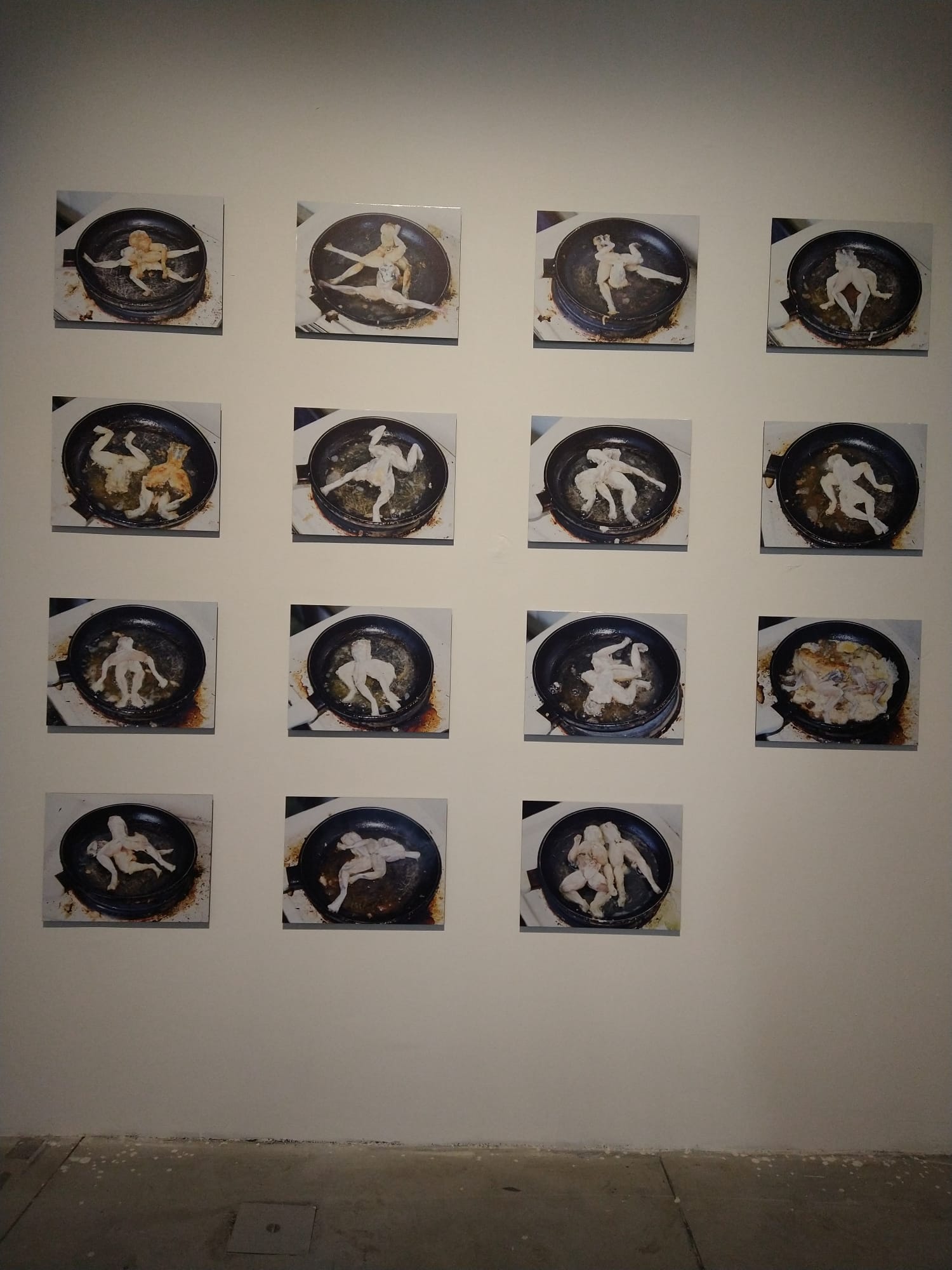
A hair-covered mega-biscuit that would like to be a space-consuming tree but, like a wise friend, wants to exhort us to learn from nature. It will consume space, but inside the pavilion you can get around just fine, even without looking at the huge presence, and the wise man more than sends messages, as per the official description, he breathes (try listening). Arabs are among the best dressed at the Biennale but Muhannad Shono’s work is nothing particularly new or exciting. Furry Friend. Rating: 4

Of Mónica Heller’s work one remembers mostly the talking pigeon (or is it a voice talking about the pigeon, not quite clear because the beak is not in sync with the audio). Then there are videos with various characters. The inspiration, the artist says, is drawn from the “multisensory architectural designs” of bingo halls, which, it seems, are everywhere in Argentina. But also in Italy. Somewhat confusing. I’m The King of Bingo Bong. Rating: 5

As soon as you enter there is a raging mess, the kind produced by Marco Fusinato’s electric guitar being amplified to produce noise. Behind a big screen where random images pass by (in the official photo there is a beautiful Ligozzi, one does not understand the connection). At the entrance, signs warn of what they are heading toward. Desastres more than the name of the project seems to us to be the result. Aridate Russolo and his intonarumors, and tell the Australians that they come to it a hundred years later and without the same charm. Noisemakers already seen. Rating: 2
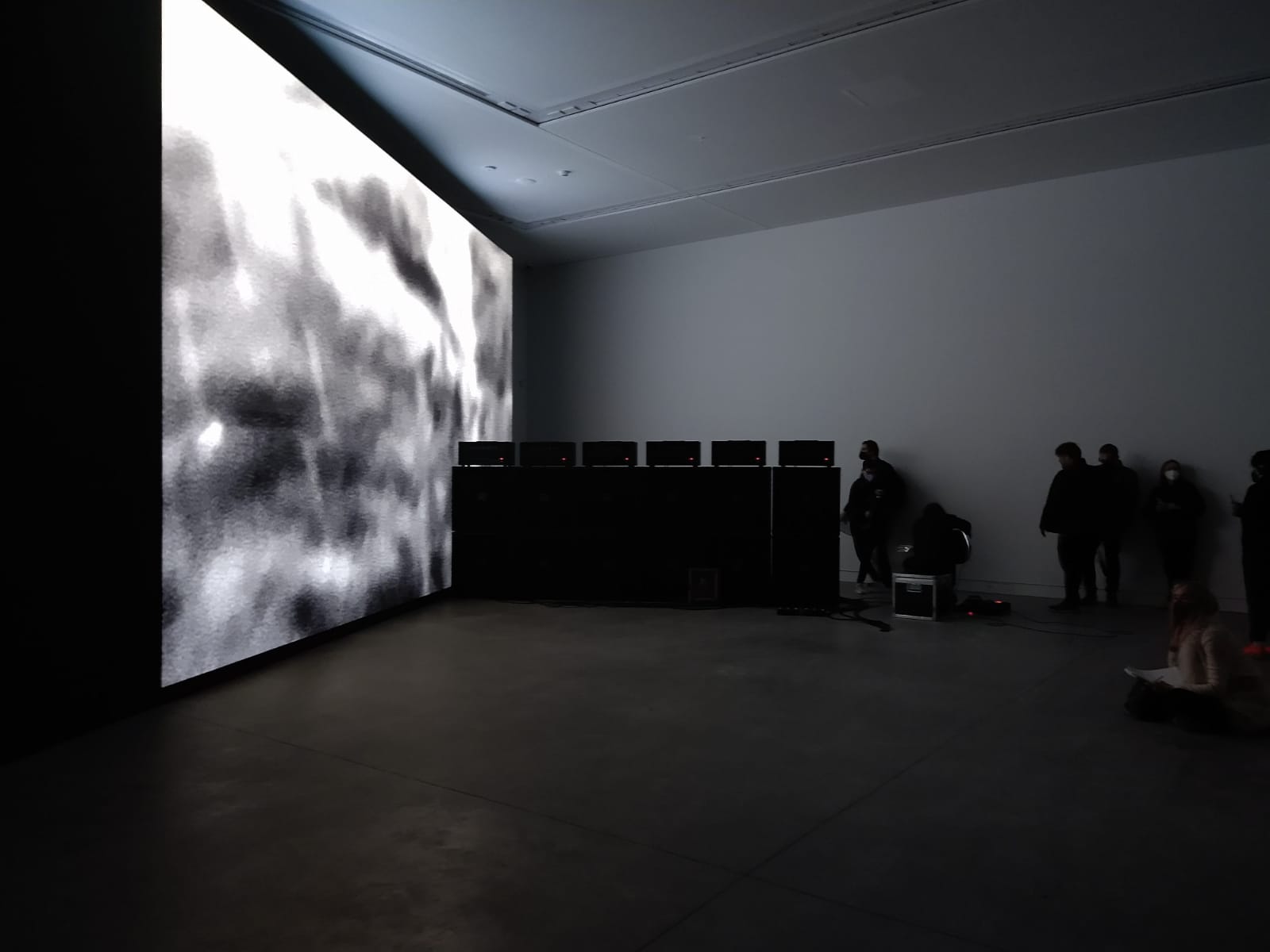
We are in the 1960s up to our necks, Jakob Lena Knebl and Ashley Hans Scheirl’s project (the pavilion is worth a visit just to hope to find the two of them granting some interviews, we assure you), amidst sexual revolution, buttock-scratching statues and Korova Milk Bar atmospheres is a lysergic trip that we can safely put among the best things about this Biennale. Peace, Love & Acid. Rating: 8 1/2
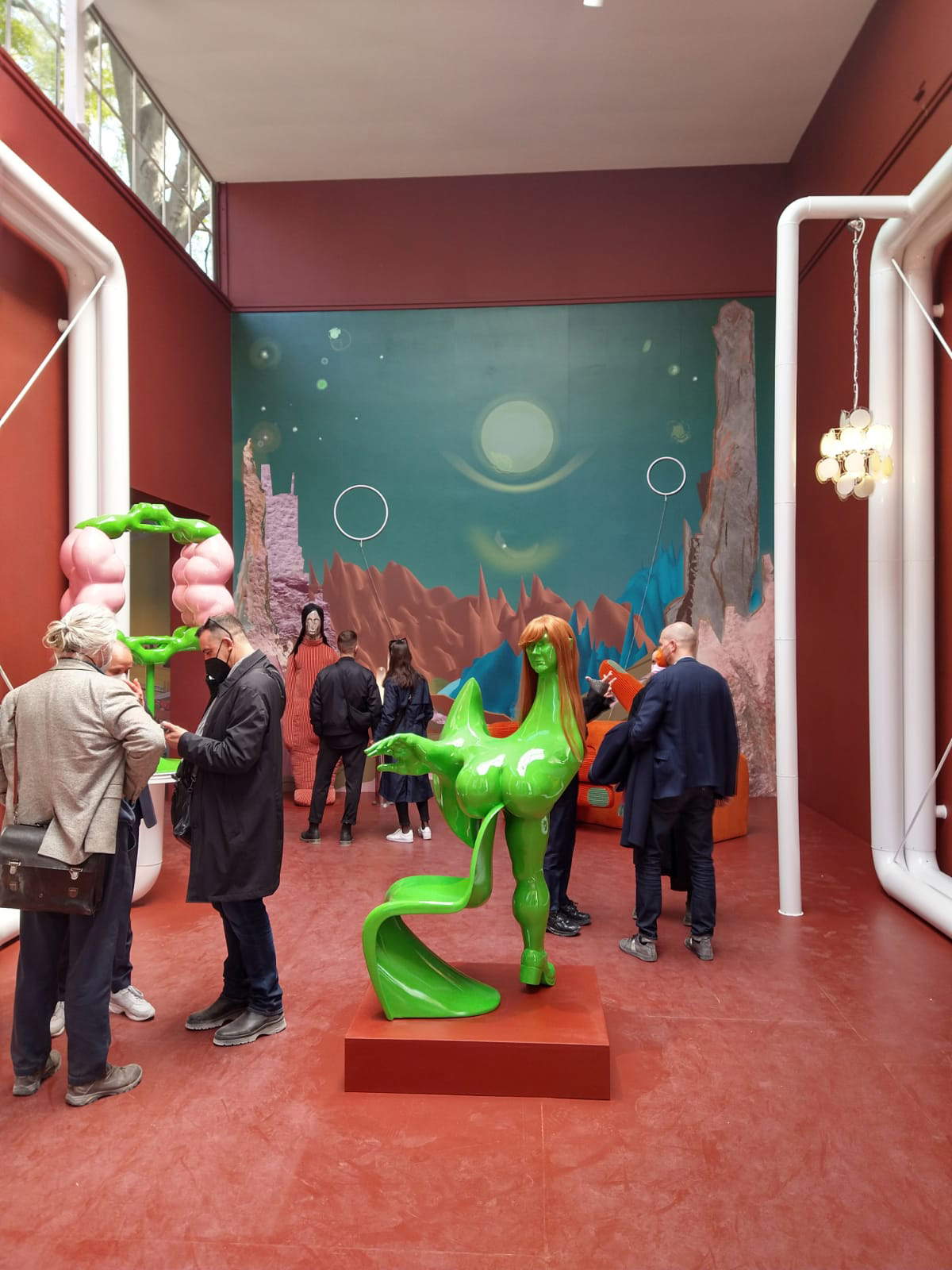
Francis Alÿs is one of the best artists on the world scene and he confirms this by dragging us into a world of children with his The Nature of Game, all about the naturalness of play. The images of pandemics, of children inside war scenarios, of migrants crossing the desert make one think. For those who know Alÿs nothing new, but the small paintings in the two side rooms surprised many. Happy (?) Children. Rated: 8

Take Oldenburg, Dalí and Lichtenstein (but also all those artists who make sculptures reproducing body parts at exaggerated dimensions), mix them up and cut them up: the recipe will give you Jonathas de Andrade’s work for the Brazilian pavilion. A whole series of Brazilian proverbs about the body (for those who really feel like it) is provided as a commentary. The body parts you find scattered everywhere also allude to sayings. The idea is to bring to life, quote the official description, the “sensations felt by an imaginary Brazilian body” that are “capable of capturing and conveying the historical moment we are living in all its complexity.” Perhaps we didn’t miss them so much, but at least the work is entertaining. With ears, with ears, bye-bye. Rating: 5
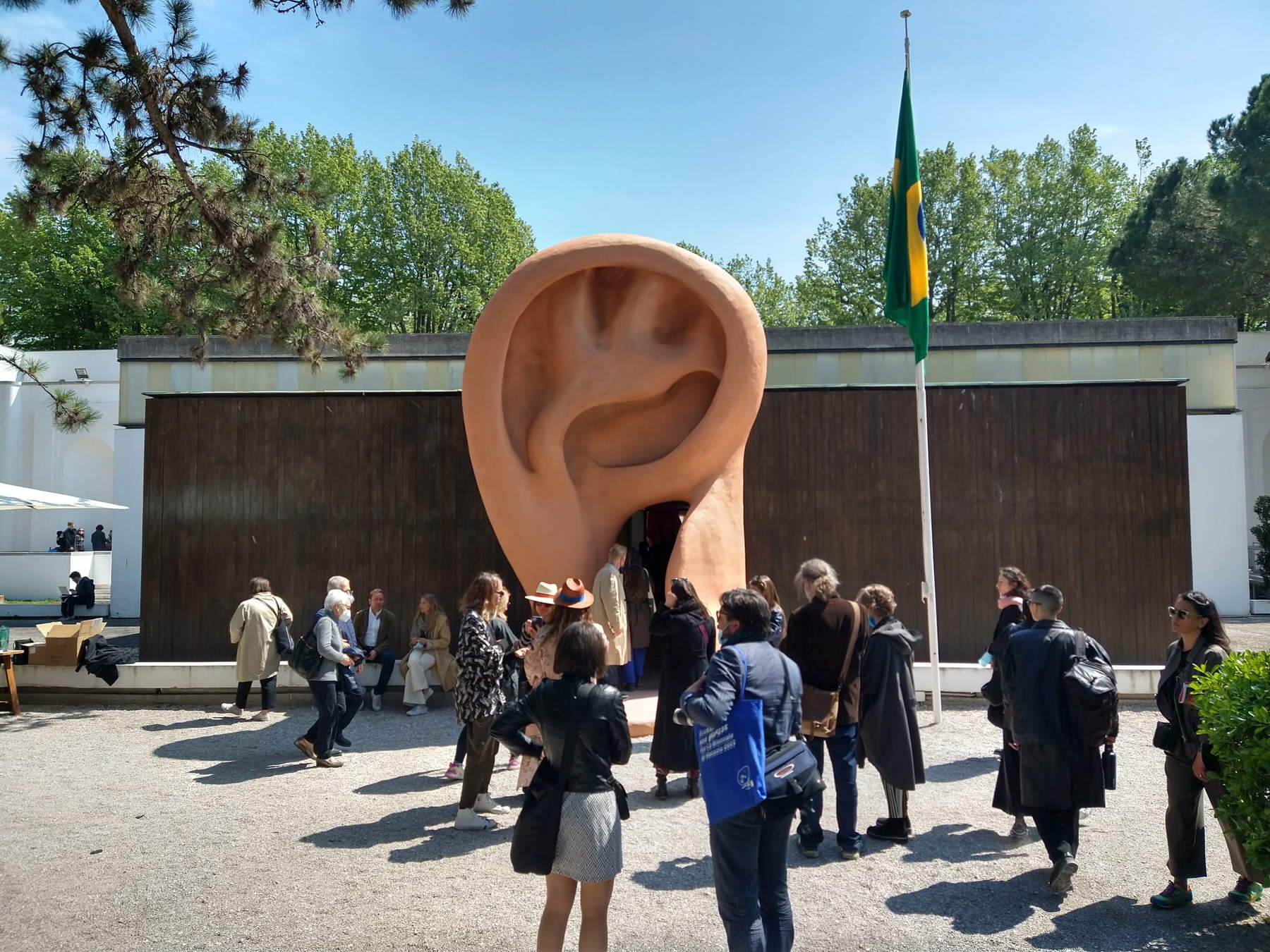
Stan Douglas brings four photos of various messes that have broken out around the world (Arab Spring, clashes after a game in Canada, and so on), with a video installation about a collaboration between British and Egyptian musicians. Poor project that leaves no trace. Unconscious tumult. Rating: 3
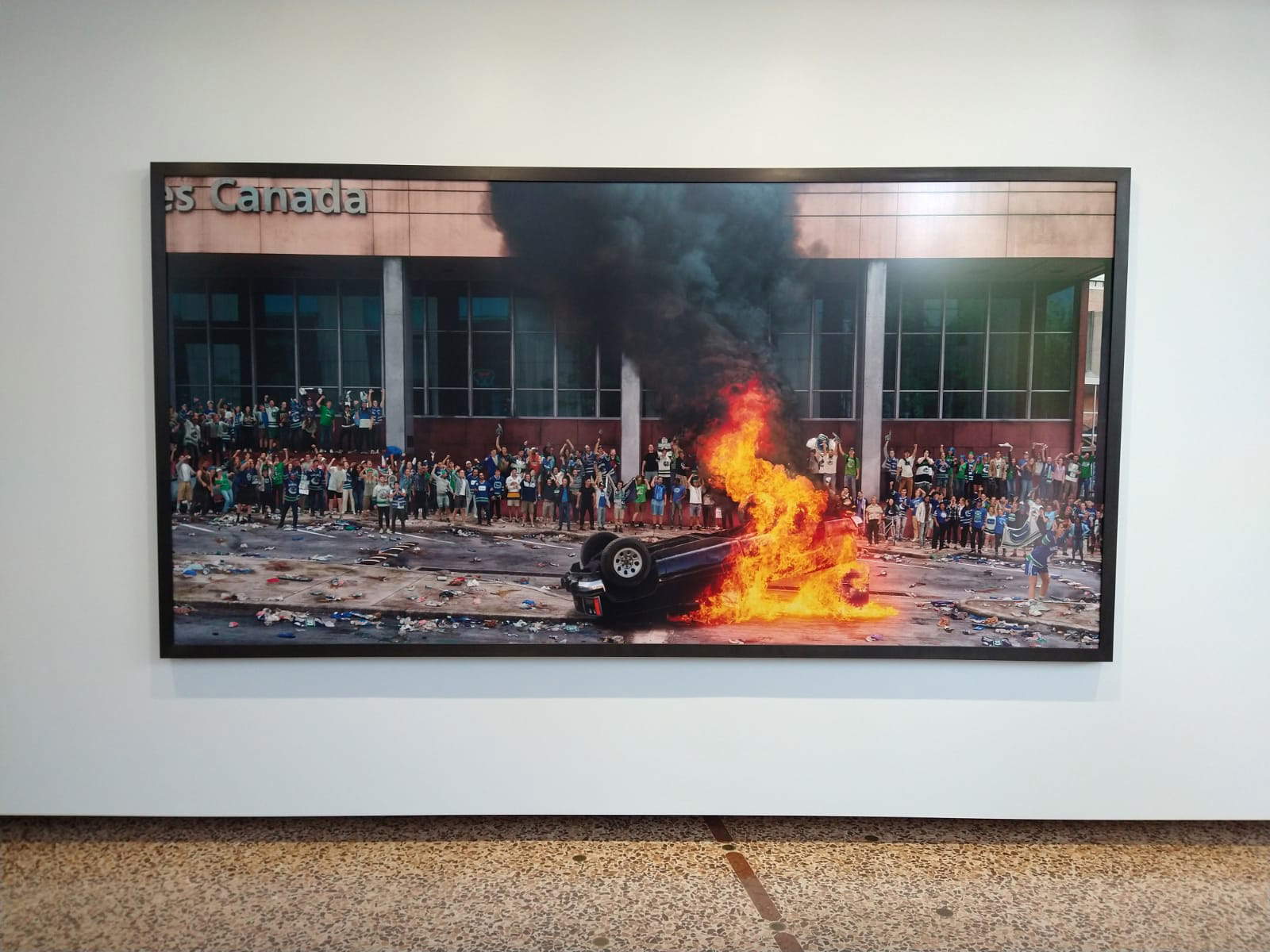
The Chinese project is called Meta-Scape. The work, we read, "relates the ecological or system image presented by ’scape’ to the current human context represented by ’man-technology-nature’ [...]. ’Scape’ is an evolving term in the narrative of traditional Chinese culture. Meta-Scape intends to portray the ’structure of understanding’ created by the Chinese nation in a process of including and transforming the world, and exploring the milestones of civilization indicated by humankind for the coexistence of the future world by using the concept of ’Scape’ of traditional Chinese culture as a key concept while maintaining the attitude of transcending the time indicated by the word ’Meta’. Whatever that means. In the end, it is two trees, three bushes and two miniature briars. Meta-bolism. Rated: 3

Long lines at all hours (they will all have seen Squid Game) to get in to see the eerie machines of Yunchul Kim, who with his Gyre project reasons about the nonhuman and the material through his “pataphysical installations” (so they are described). The project actually has a certain appeal but strikes little chord-it may be that there are now dozens of artists creating similar machines. Gyre the ball. Rating: 6
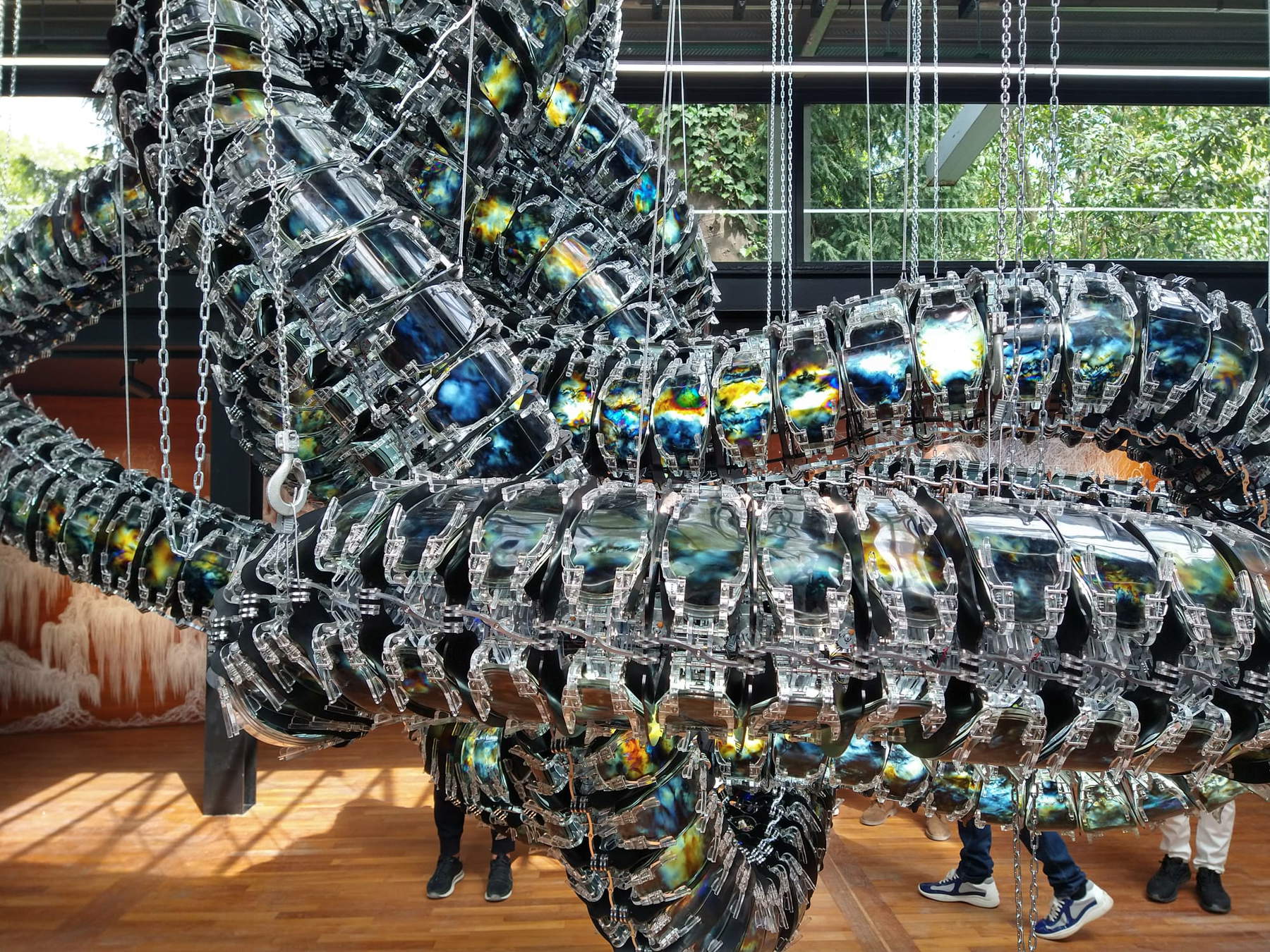
Uffe Isolotto mimics Cattelan with his hanging centaur, a little bit Novecento and a little bit the last work the Padua-based artist presented in Milan, and puts it inside piles of soil and objects scattered here and there (apparently those of a hypothetical family whose fate we don’t know) that are meant to evoke Danish rural life in order to mix memories and hyperrealism, human and transhuman, science fiction and tradition. But why? Tense nerves hang horses. Rating: 3 1/2
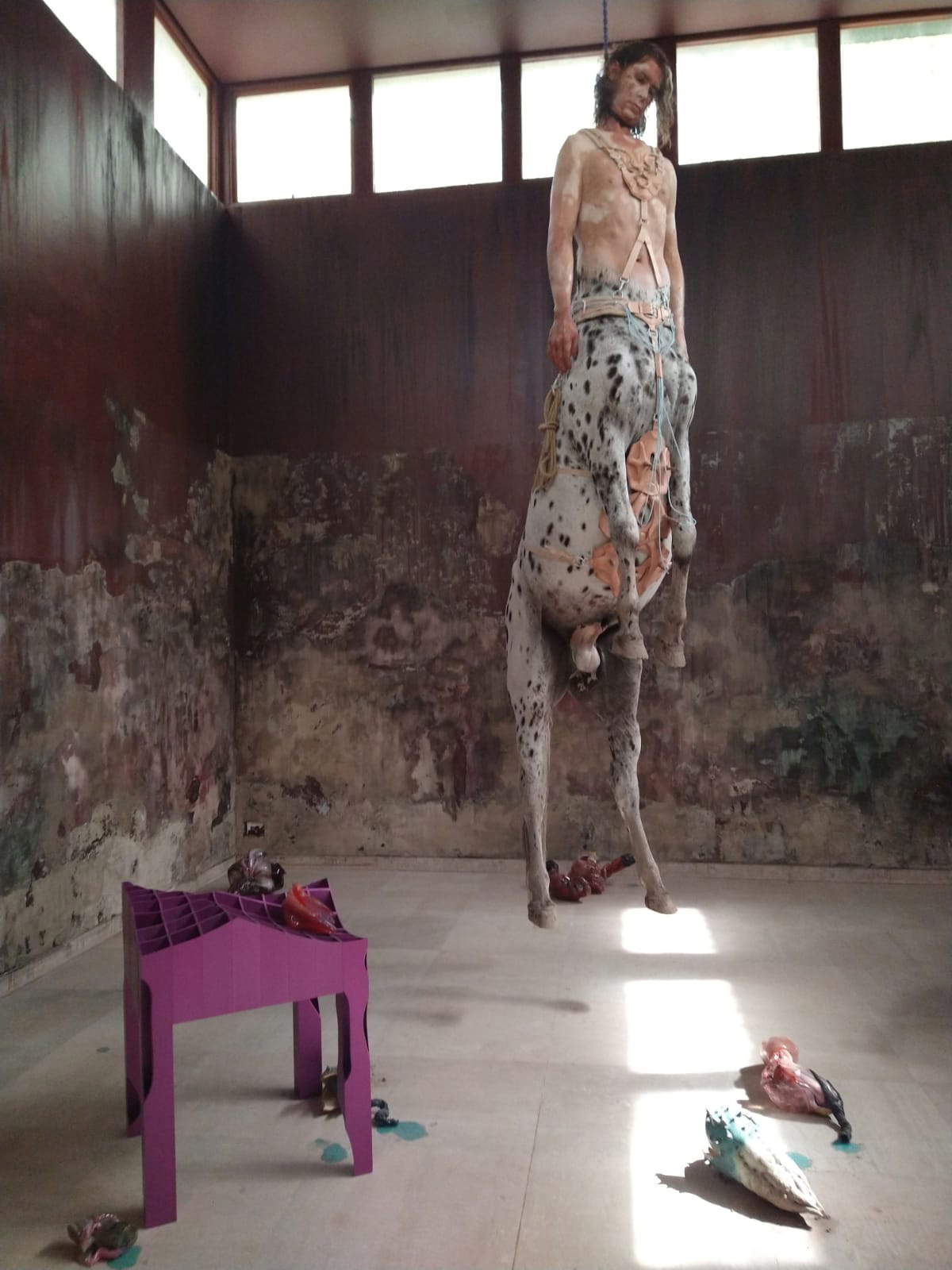
At the 2019 Biennial, we had awarded Egypt the palm of the ugliest pavilion, and this time too the Egyptians go out of their way to confirm themselves at the level of three years ago. “The Promised Land where milk and honey flow freely” in an “eternal war” of human beings “between their instinctive and intentional natures,” they say. Hanging from the ceiling, however, we practically see giant udders (which evidently justifies the milk flowing in torrents) where videos are projected simultaneously. Videotapes. Rating: 3

The Baltic country rents the pavilion that was once Holland’s and looks good in its first appointment with the Gardens: Orchidelirium is a way that we thought was very interesting to talk about colonialism, from the side of ecological exploitation. Inside the pavilion also weaves together forgotten stories. In the center to be seen is the rotogravure spitting ribbons in a continuous stream. Mechanical Botany. Rating: 7

Close Watch is Pilvi Takala’s video installation that brings his experience as a security guard to Venice to talk about security and control. Basically a film, moreover with rather boring and somewhat weak content. Seeing it on a bench in a tight environment with people coming in and out all the time is not exactly ideal (and we are already quite wary of video works). We swear we’ll see it again in our own time. Rating: 5

You know the National Museum of Cinema in Turin, Italy? The rooms where there are reconstructions of the environments of various film genres? Zineb Sedira has done the same thing, only with French-Algerian cinema of the 1960s. The result is total immersion (there is also a lot of real cinema in the last room), to great effect. And in front of the bar when you enter, you also happen to see a tango dancing. Biennale Cinema. Rating: 7 1/2

Maria Eichhorn scrawls the walls of the German pavilion and sticks a few sentences of her own here and there to “focus on the history of the German pavilion,” the presentation reads. There are thousands of buildings in Italy that bring out their history; they are the so-called “garish” ones, as they say. Union minimum. Rating: 3
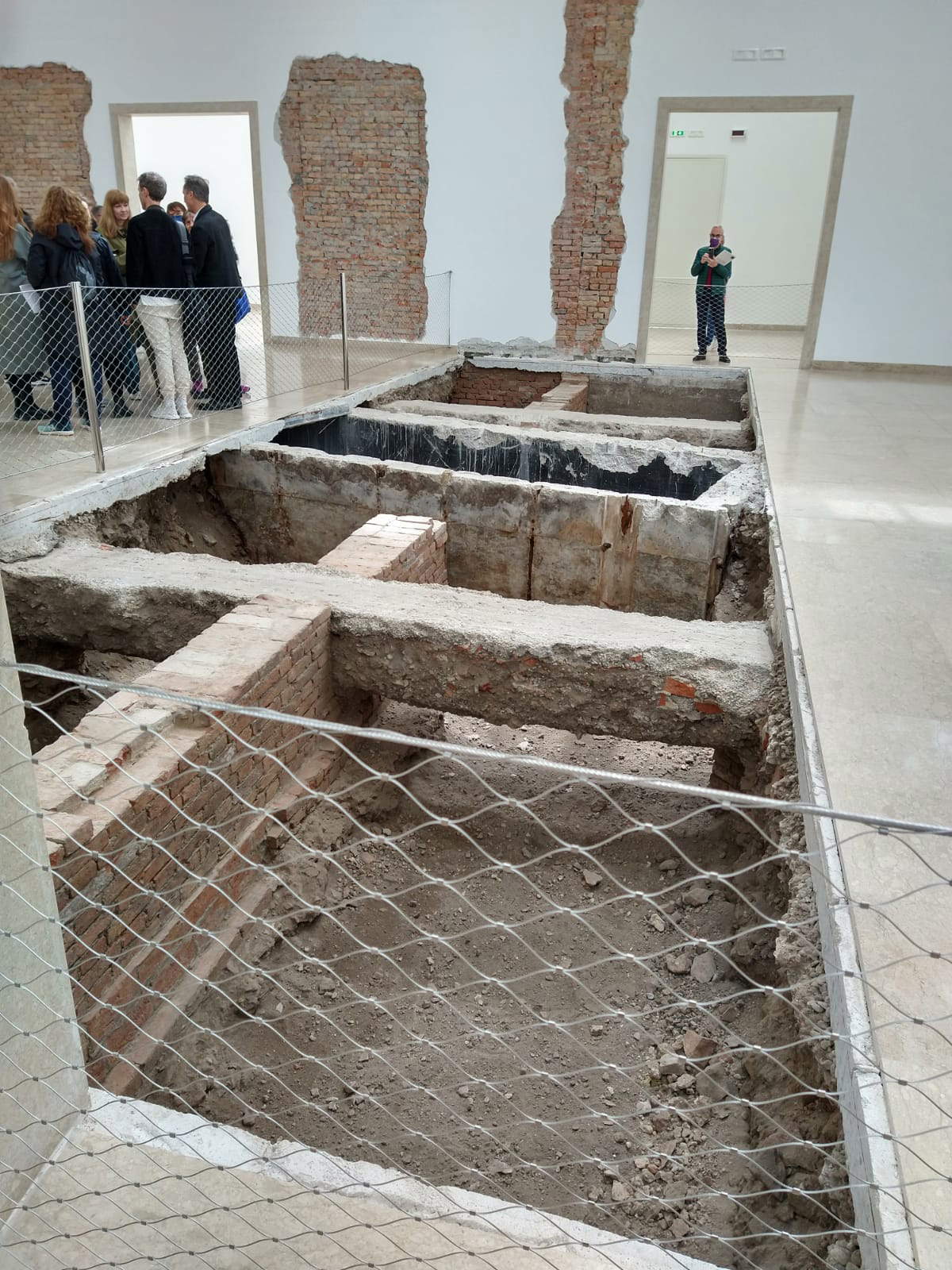
Black Star, in addition to being David Bowie’s latest album, is also the name of the African country’s project, which is intended to reference the star that appears in the center of the Ghanaian flag. Inside, installations and paintings by three artists, Na Chainkua Reindorf, Diego Araúja and Afroscope. Scenic, but no big deal: it makes one regret the Ghana pavilion of the last Biennale; it was among the best things. Falling Stars. Rating: 5
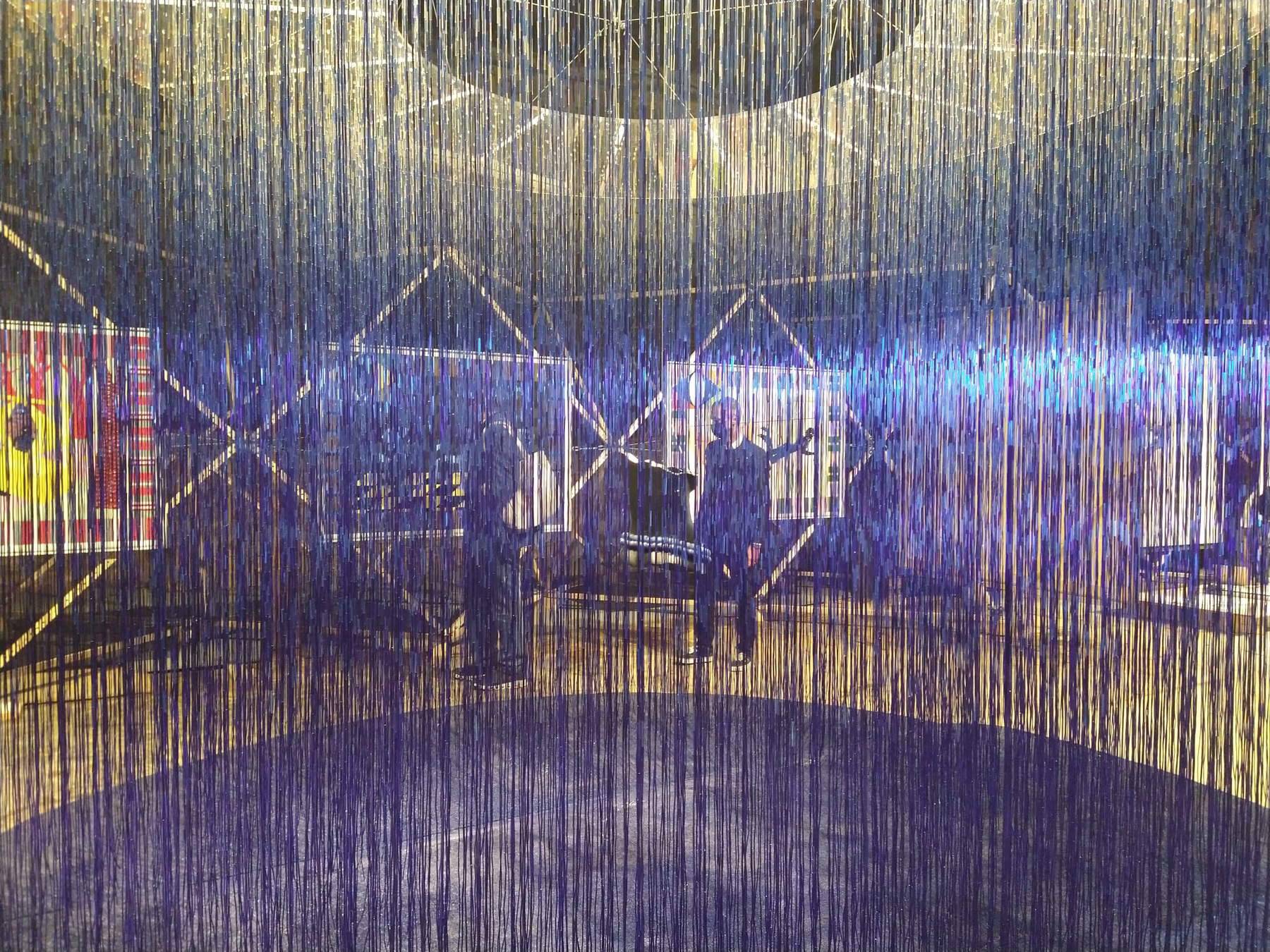
A very long queue here, too, to get in to see four mirrors on which laser phrases are projected inside a darkened room. The phrases, explains the Dumb Type collective that designed the whole thing (it makes one wonder why it took multiple minds to think of it), are taken from a geography textbook from the 1850s and “pose simple but universal questions.” All in dialogue with the empty space in the center of the room. If you printed a flyer, you’d do it faster. Rating: 2
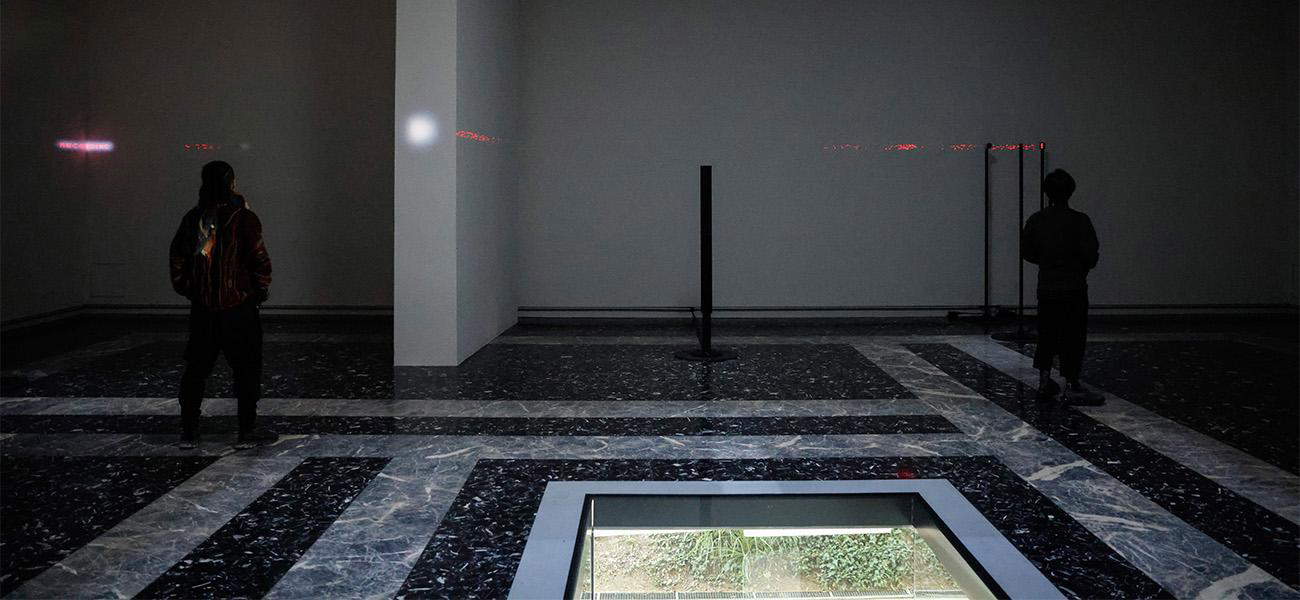
An interesting homage to British black female vocalists: this is Sonia Boyce’s project. You walk in and hear singing all over the place, on the walls geometric figures and images that provide atmosphere and almost seem to translate what the artists on the screens are singing. Black Music. Rating: 7 1/2
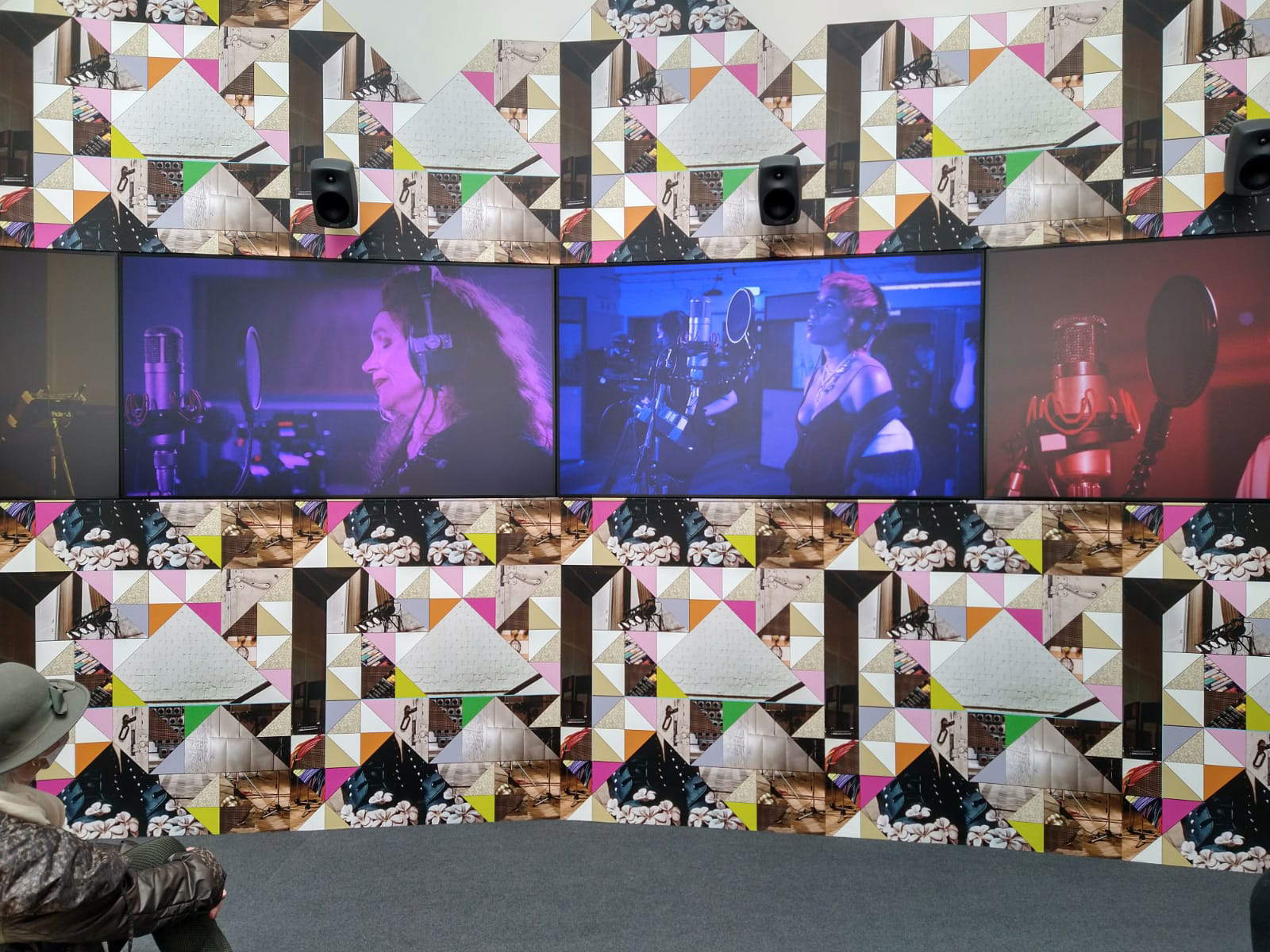
Perpetual motion by Sigurður Guðjónsson is a video where a “stream of energy” flows continuously through concepts of space, energy and time. Fabrizio Plessi has been doing the same things for years (actually, he does them better, and he is the original) and yet it has been a while since we have seen him in the Biennale. For the next edition it will be proposed to disguise him as a Viking. Then, Perpetual: they’re taking the video down in November anyway. Perpetual for a fixed term. Rating: 3
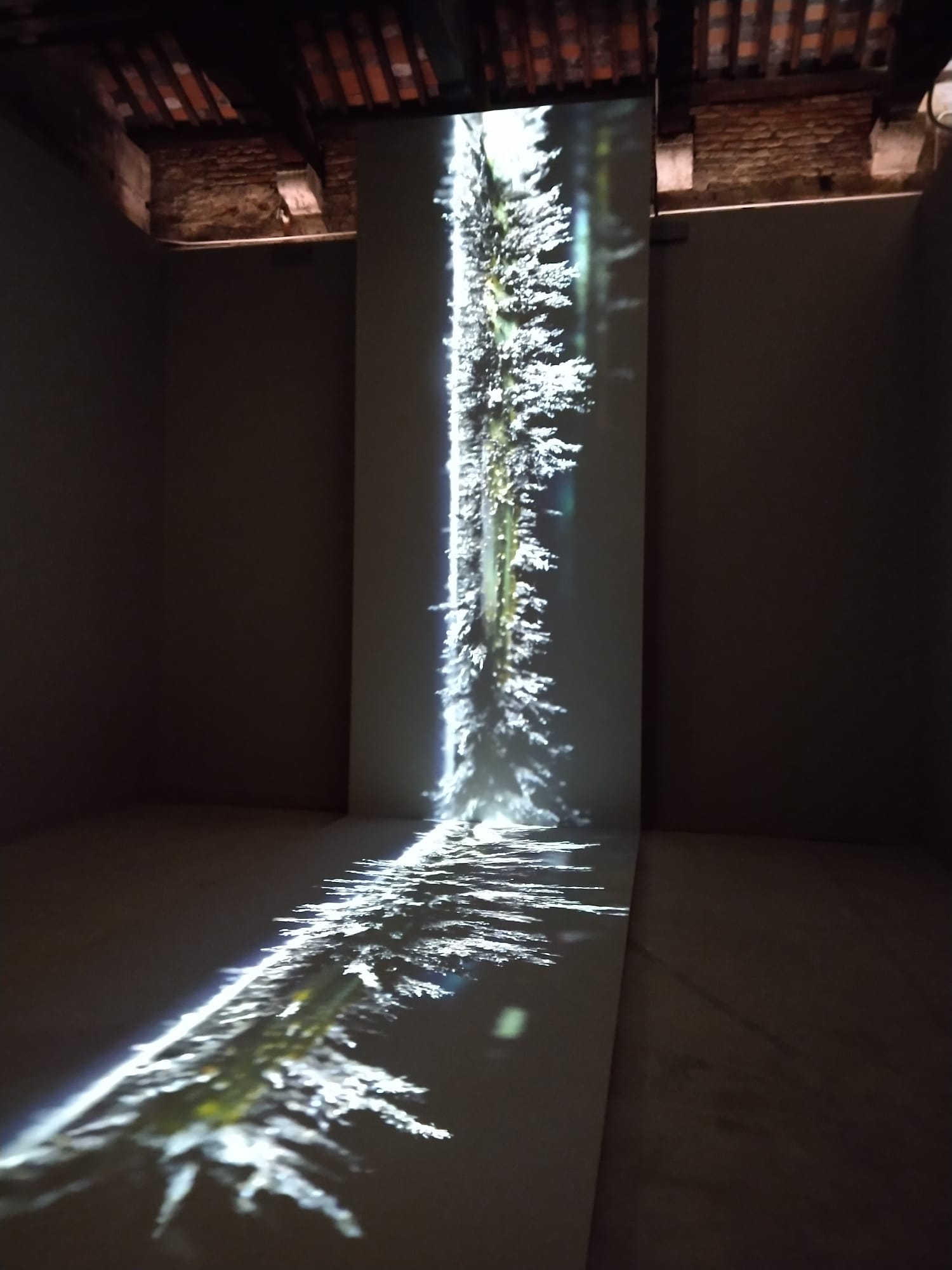
Gian Maria Tosatti takes us all inside a factory. To those with some memory, it reminded a lot of certain Mike Nelson projects, from The Coral Reef to the Great Britain pavilion of the 2011 Biennale. There it was about historical memory, here it was about “night history” and “comet destiny” to administer to the audience an allegory of the Italian economic miracle from rise to decline and then to the final comets (or fireflies? which are not in the sea anyway). To our director’s poetic soul, the Singer sewing machine reminded him of the one his great-grandmother who was a seamstress used. To the rest of the team, more prosaically, a Kounellis installation made in the same way of sewing machines. In short, on originality there would be much to discuss. However, Tosatti’s attraction is perfect for the Luna Park Biennale. And it must be acknowledged that the ride is evocative and impressive. Industrial metal. Rating: 6 1/2

Jakup Ferri presents an environment overflowing with embroidery, paintings, and outsider art as if it were raining: as if there wasn’t enough at the international show. At any rate after rising from the darkness that envelops Saudi Arabia and Argentina a little color doesn’t hurt. Inside Outside. Rating: 4 1/2

When one arrives at the pavilion, one has the impression of entering a little trinket store: these are the ceramics of the Skuja Braden duo (Inguna Skuja and Melissa D. Braden), all arranged on tables and shelves. The installation, they say, “explores the mental, physical and spiritual areas within the artists’ home.” On the vases are depicted people trumpeting from all sides and in all poses, and on the center table also looms a chandelier of phalluses that seem to rain down on the audience at any moment. We will do anything to get invited to their house for dinner. We give it full sufficiency because it is entertaining but more importantly it is one of the rare moments when we see ceramics at the Biennial. Crazy Cocks. Rating: 6 1/2
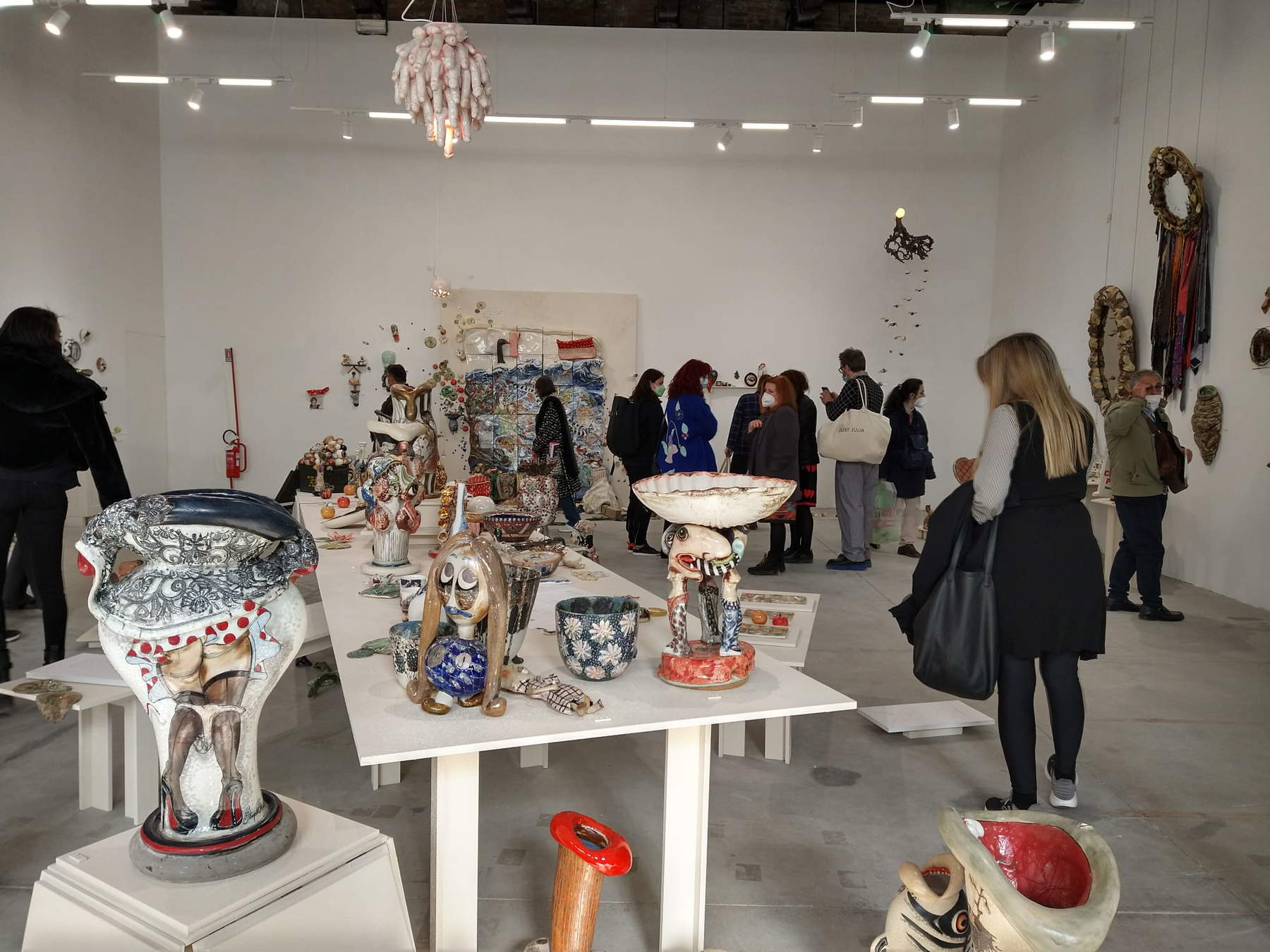
This is the project of a local artistic glory, Tina Gillen, who creates an environment with paintings and installations that refer to the theme of living, a workhorse of hers, but also to the landscape. The paintings are monumental in size, they are characterized by their geometrizing and minimalist approach, and the dialogue with the wooden installation is well accomplished. It is the content that is perhaps a bit elusive when read in relation to the Halls of Arms as Gillen wants to do. The work, however, holds. Beach House. Rated 7 1/2
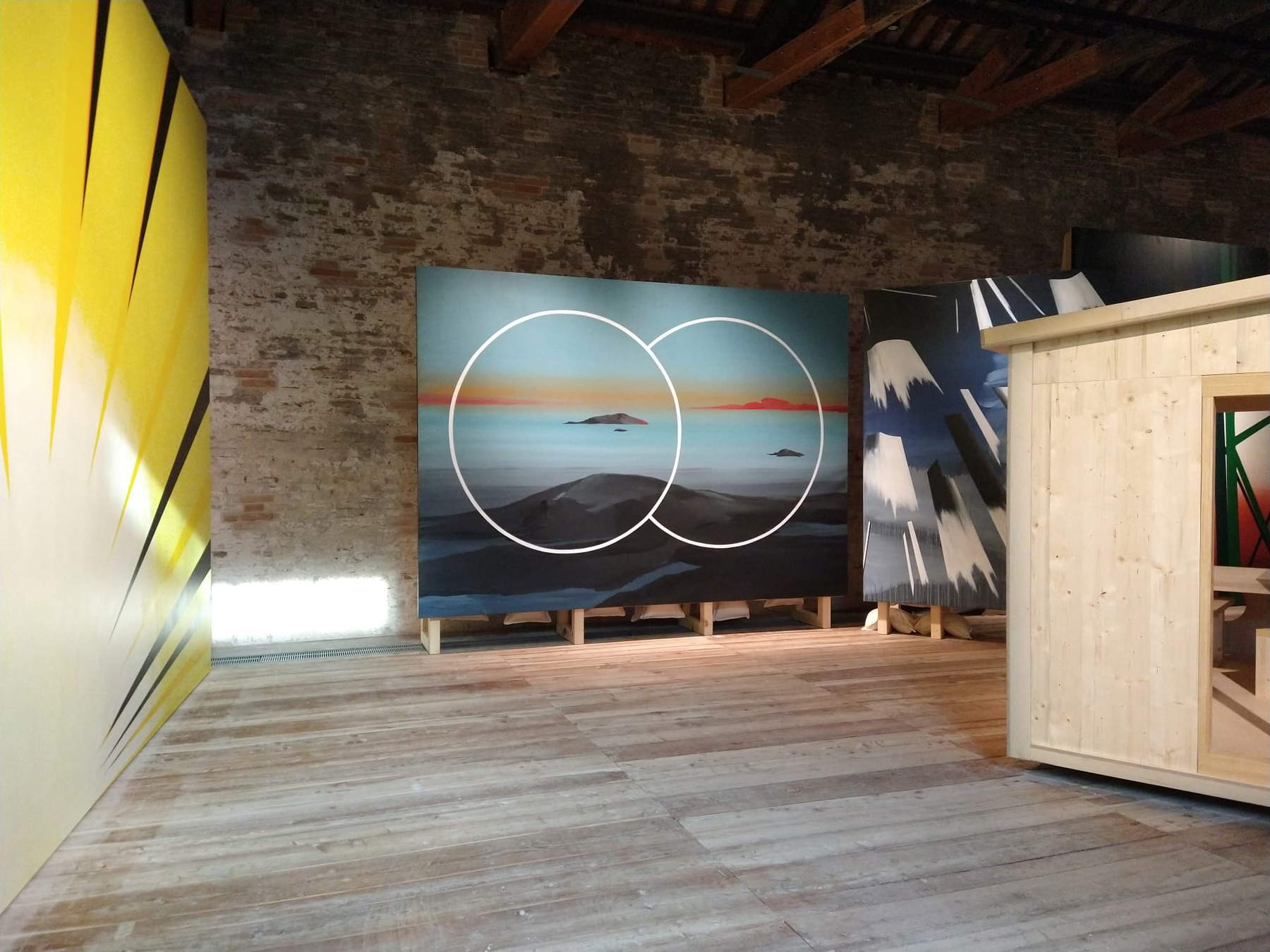
The Malta pavilion is perhaps the most unusual: the curatorship is entrusted to the odd couple of a noted Caravaggist, Keith Sciberras, and a contemporaryist, Jeffrey Uslip, to bring to life a singular homage to Caravaggio imagined by Arcangelo Sassolino and two Maltese artists, Giuseppe Schembri Bonaci and Brian Schembri. The Beheading of the Baptist, Merisi’s painting preserved in Valletta Cathedral, his only signed work, is evoked with an installation where drops of molten steel fall into pools of water that allude to elements of the Beheading. The Caravaggesque light is there, the installation is powerful, however, the connection with Caravaggio has eluded many (the re-enactment of the work, however, is above all a mental fact, an idea to be experienced, and that is how the installation should perhaps be read). Caravaggio in Biennale. Rating: 6 1/2

If you want to know how nonbinary gender is identified in the Samoan islands, visit the New Zealand pavilion where Yuki Kihara brings a series of photographs of fa’afine (meaning “like a woman”), a term by which nonbinary people are identified. The idea is also to decolonize Gauguin, in a sense. However, Paradise Camp, with those images saturated almost to the point of improbability, seemed to us more like the photo album of the Pacific trip. Vacation Village. Rating: 4
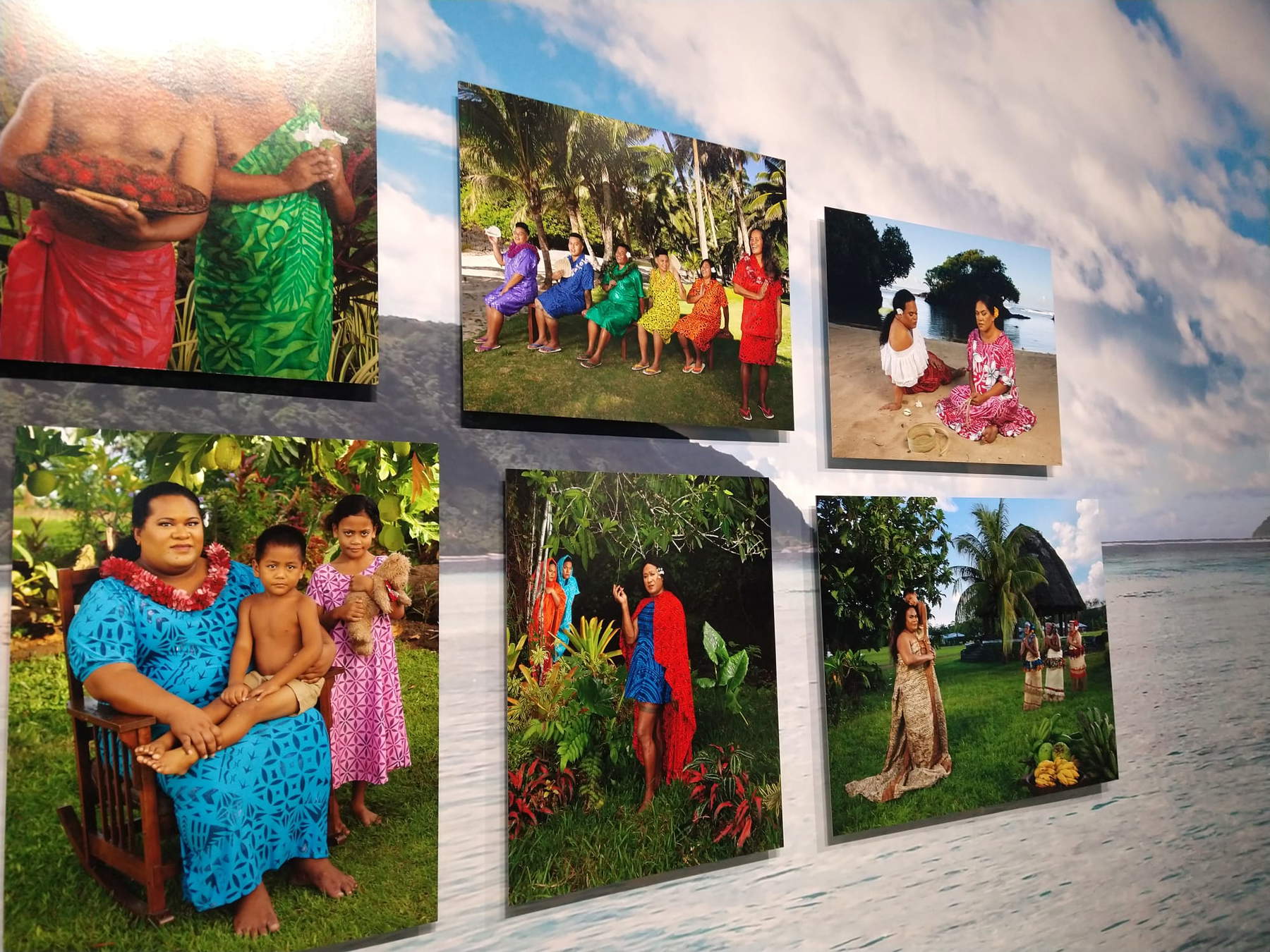
For the occasion, the Nordic Countries Pavilion became the Sami Pavilion, and exhibited works by Pauliina Feodoroff, Máret Ánne Sara and Anders Sunna representing the Sápmi, the homeland of the Sami, the last indigenous people of Europe. Between painting, sculpture and olfactory installations the amalgam is excellent. Special mention for the young painter Anders Sunna who in our opinion is the revelation of this Biennale for his effective, politically connoted, strong paintings. A different and unconventional way to talk about decolonization. Many Sami. Rating: 9

A journey into the history of Peru in the 1980s, at the time of the Sendero Luminoso, with Herbert Rodriguez bringing together in an installation his works from the 1980s, when he actively participated in the clashes. An interesting journey inside a history not so well known in our latitudes. Some doubts about the arrangement of the works and the presentation to the public. Anarchy in the Peru. Rating: 6 1/2.
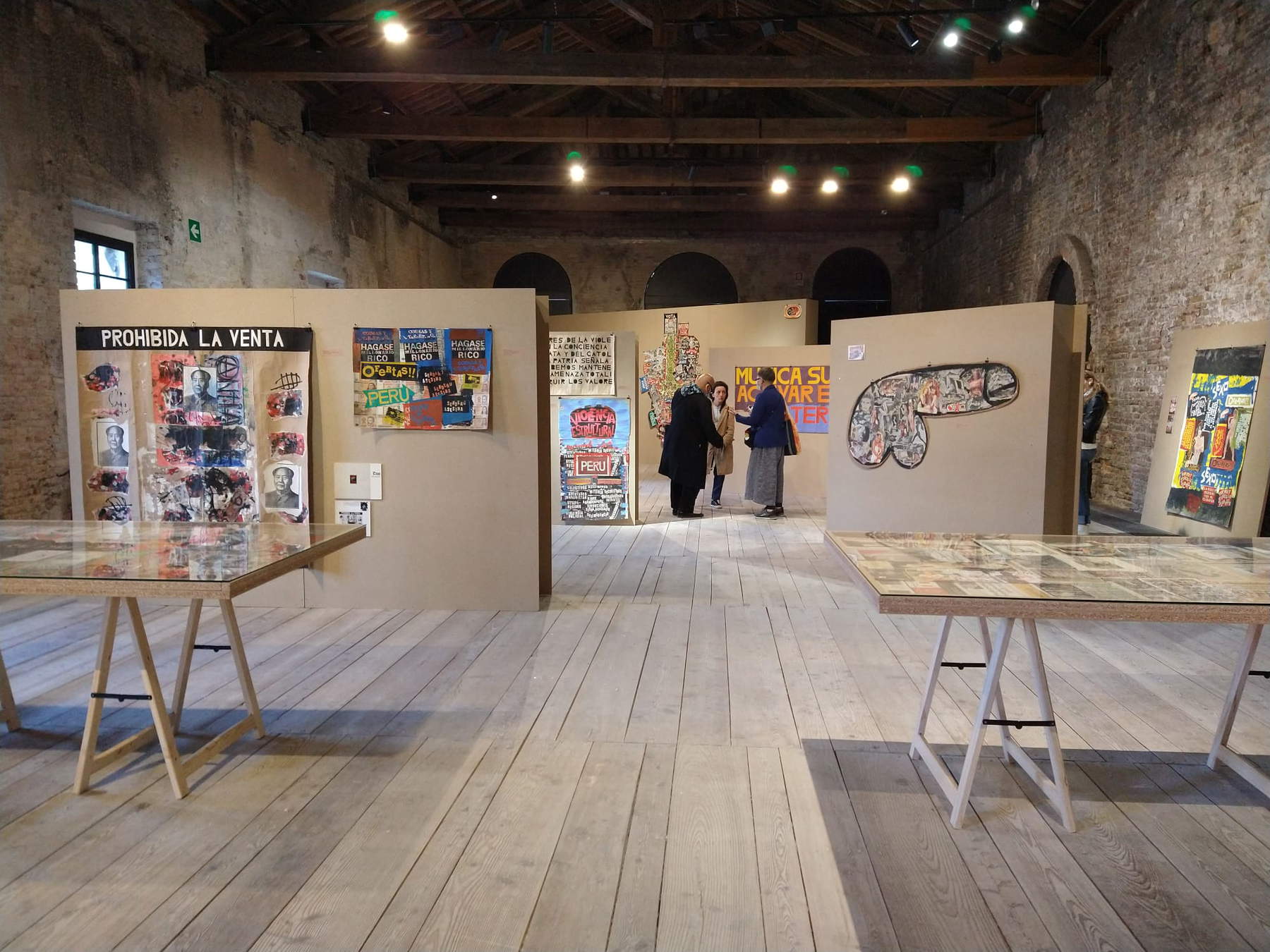
Polish artist Malgorzata Mirga-Tas reinterprets the frescoes of the Schifanoia Palace in Ferrara in a Roma key. Curious that in the Biennale that wants to overcome the so-called Renaissance cliché of the man who is the measure of all things comes the very Renaissance work that disproves it. Otherwise, usual outsider art that will, however, surely amuse connoisseurs of Quattrocento art. Gypsy Del Cossa. Rating: 5
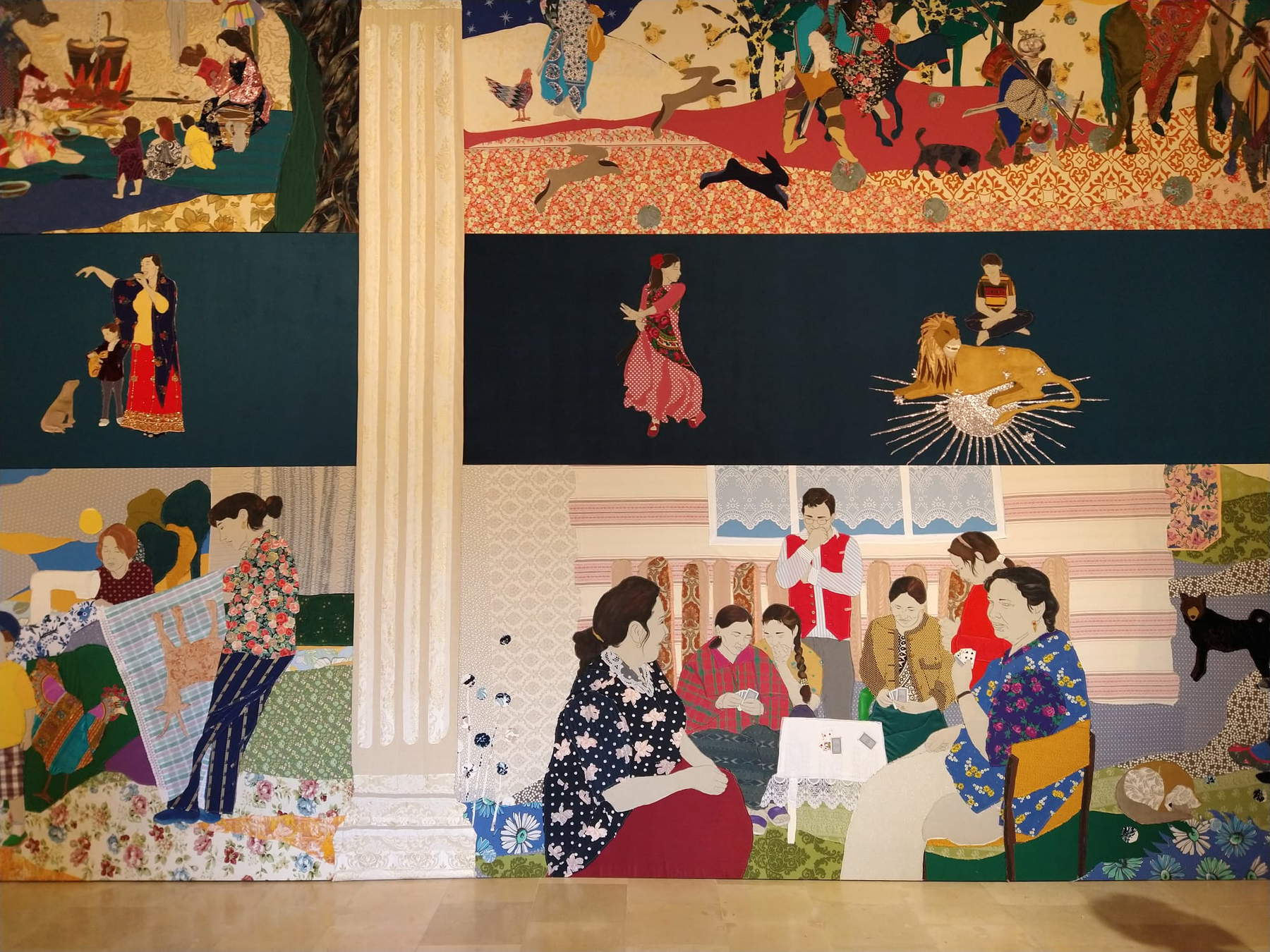
We have the sea three kilometers from our office so the installation by Vladimir Nikolić we see it practically every day, but we understand the excitement it can generate in a landlocked country. There are two giant videos, one projecting images of the sea and one showing the artist swimming in the pool instead. Note that it took the artist three years of work to come to think in this way about the value of water. Taste of Salt. Rating: 3

If you haven’t gotten your shoes dusty enough wandering around the Arsenale Gardens and exteriors, Slovenia’s pavilion gives you the coup de grace: there is sand on the ground, but not even the coarse-grained kind. It’s the fine Romagna Riviera-style kind that gets into your shoes like a charm. Get your feet up right. The why of this idea, however, escapes us. It’s too bad because Marko Jakše, with his stark surrealism, is one of the most appreciable artists at this Biennale, and his paintings attract and fascinate. Tropicana Beach. Rating: 7 1/2
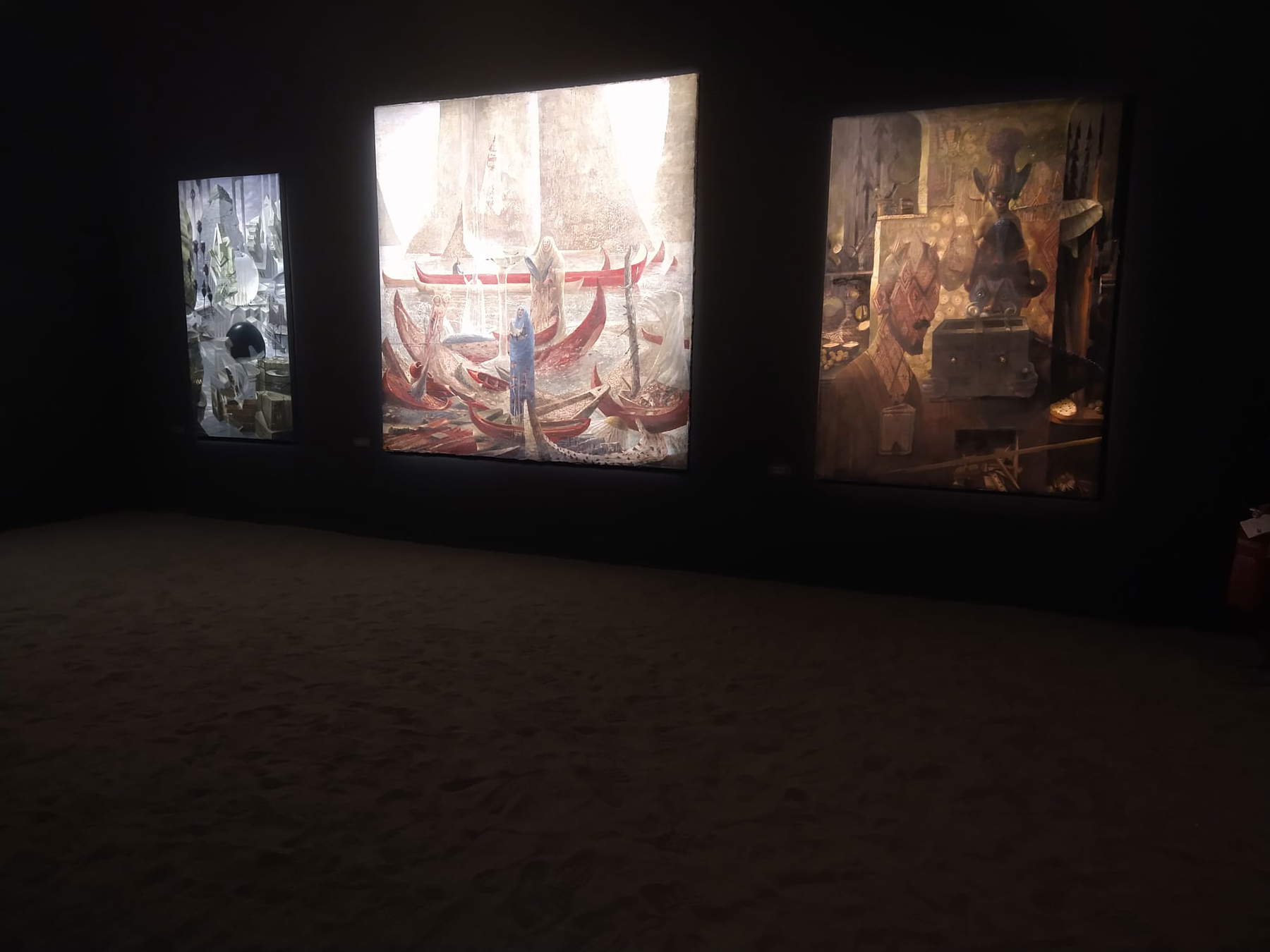
Ignasi Aballí modifies the cubages of the Spain Pavilion to “correct” the building, which is slightly misaligned from its neighbors, Belgium and former Holland (now Estonia). There is nothing inside, we tell you. Except for the light coming in through the windows and interacting with the white walls, for Aballí this is also a work of art. Our Luca Rossi, who has been hammering us on social for years with the same concept, will be happy; he can say he has an Iberian epigone. Hello is the surveyor there? Rating: 3
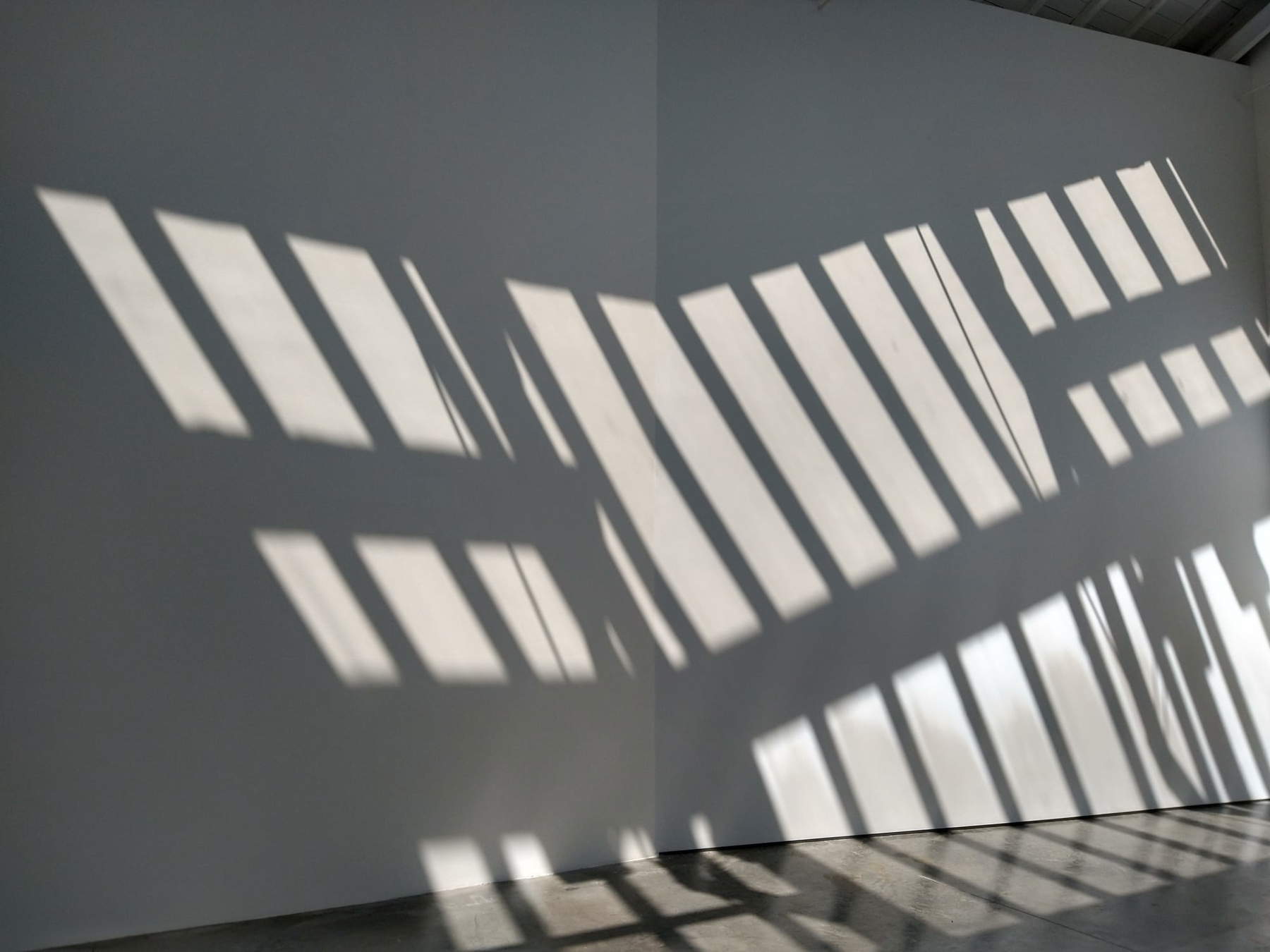
Simone Leigh we all know, and the United States confirms itself as one of the highest quality pavilions. After the last, excellent editions (memorable Mark Bradford in 2017) here come Simone Leigh’s black women reflecting on the female body, the African diaspora, African Americans, all with monumental works in bronze and ceramic. Also transformed is the exterior. Great work. Black Power. Rated: 8
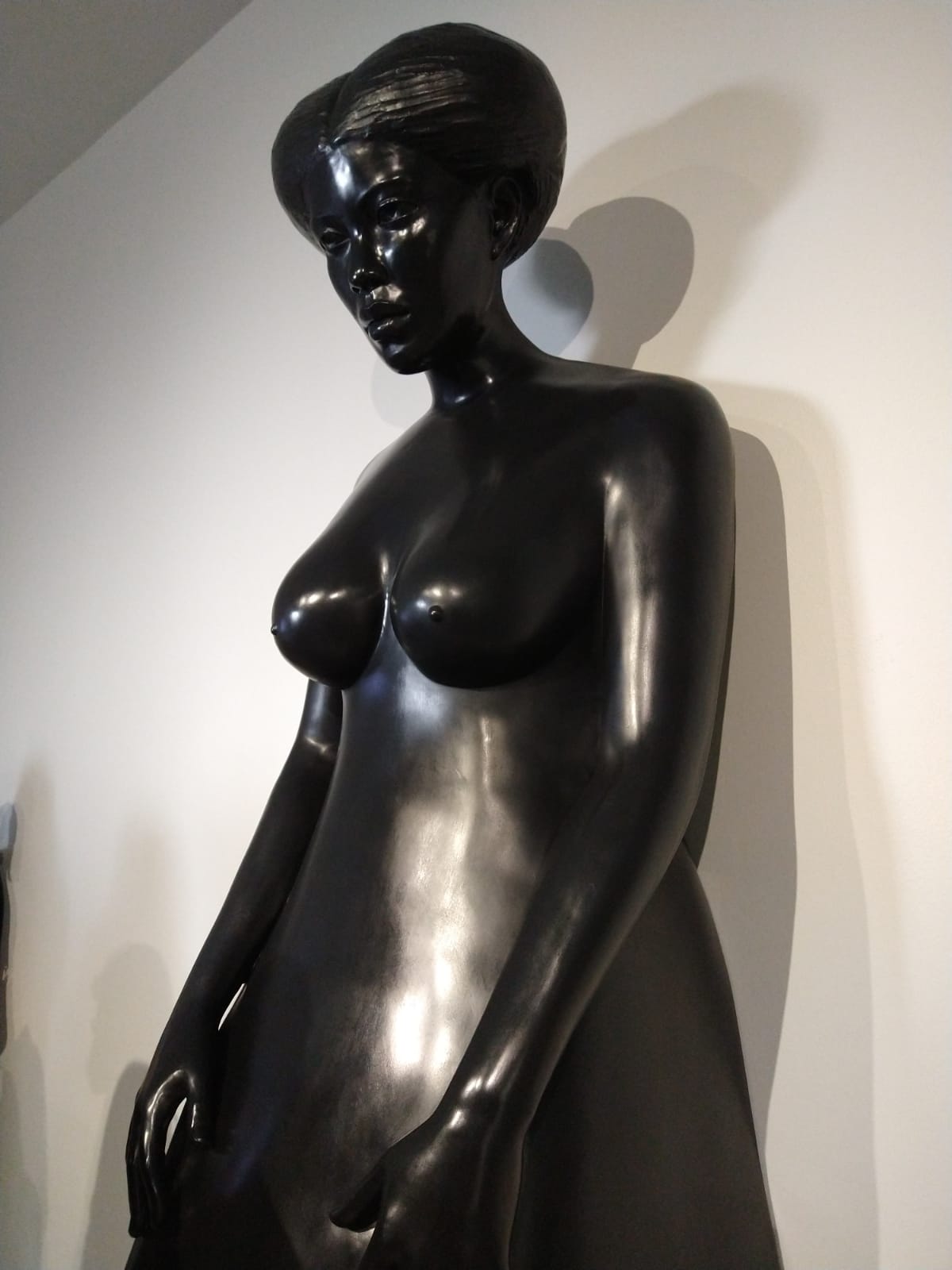
South Africa wants us to think about how the pandemic can produce opportunity by presenting works by artists who worked during the pandemic (so the same argument can extend to virtually the entire Biennale). Three artists, Roger Ballen, Lebohang Kganye and Phumulani Ntuli, between photography and installations. The pavilion wants to lead the audience in a “process of self-discovery,” but already finding out what the works want to tell us would be a great achievement in itself. Pandemonium. Rated: 4
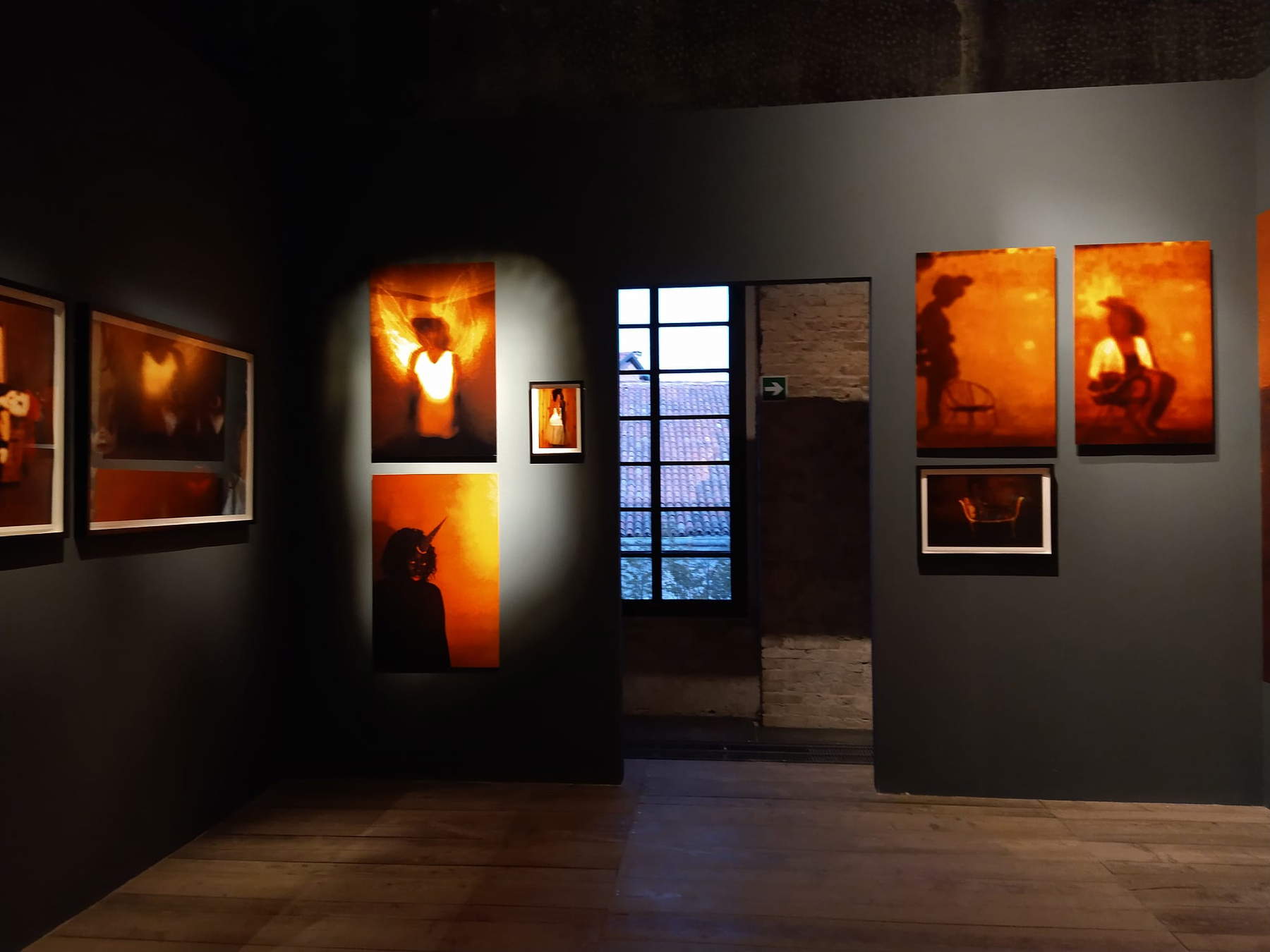
As soon as one enters, piles of rubbish scattered everywhere and one wonders if we have gone in the right direction. Then same stuff but bathed in orange light and finally dark environment. Those huge wooden logs are sculptures inspired by folk statuary (it will be), and the light changes imagined by the artist, Latifa Echakhch, are meant to make us “see” the music of percussionist Alexandre Babel, one of the two curators. Getting music seen is one of the most difficult feats for an artist: here, however, we can’t wait to get out. Sore notes. Rating: 4
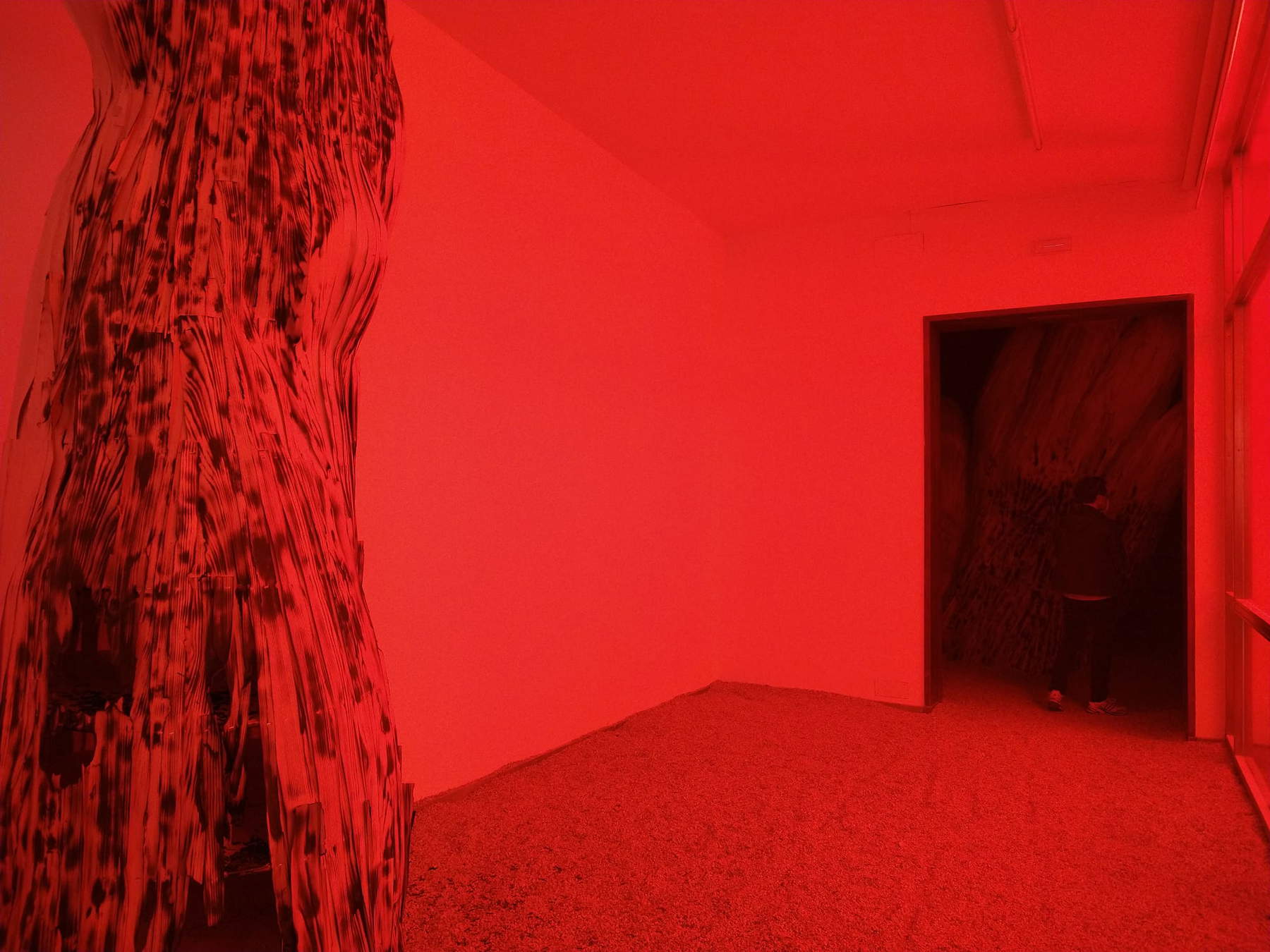
Along with Belgium we find ourselves in the most lyrical pavilion of the Biennale. Füsun Onur, an experienced artist, tells us the story of a journey from Istanbul to Venice with his little characters made of wire, like the ones we used to make with a sparkling wine cage as children. One of the most delicate works at the Venice Biennale. Minimalism and poetry. Rating: 8 1/2.
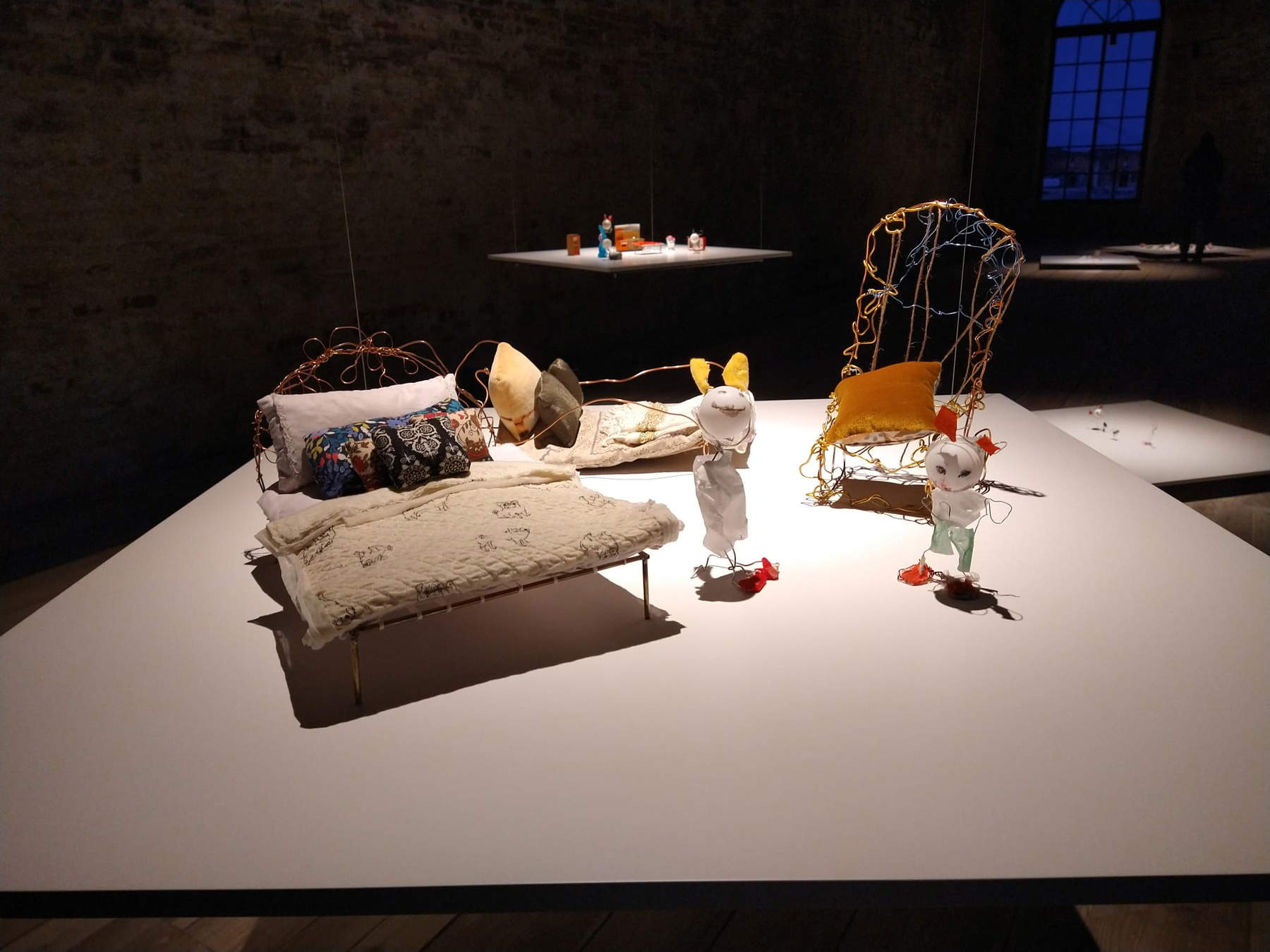
Pavlo Makov’s fountain is a project that the Ukrainian artist has been working on for several years, symbolizing the paradox, we read in the presentation, of “the river that flows into another, yet both run out and dry up.” The work works, too bad it was installed in what is practically a transit area, and the lights coming from the Kosovo pavilion next door dampen its load a bit. Besides, let’s face it: Makov (pictured left) worked on this project in Kharkiv under the bombs, the curators drove the fountain pieces to Venice as best they could, and the work is now there. Applause for this great team that despite everything managed to be there. Courage and respect. Rating: 7 1/2
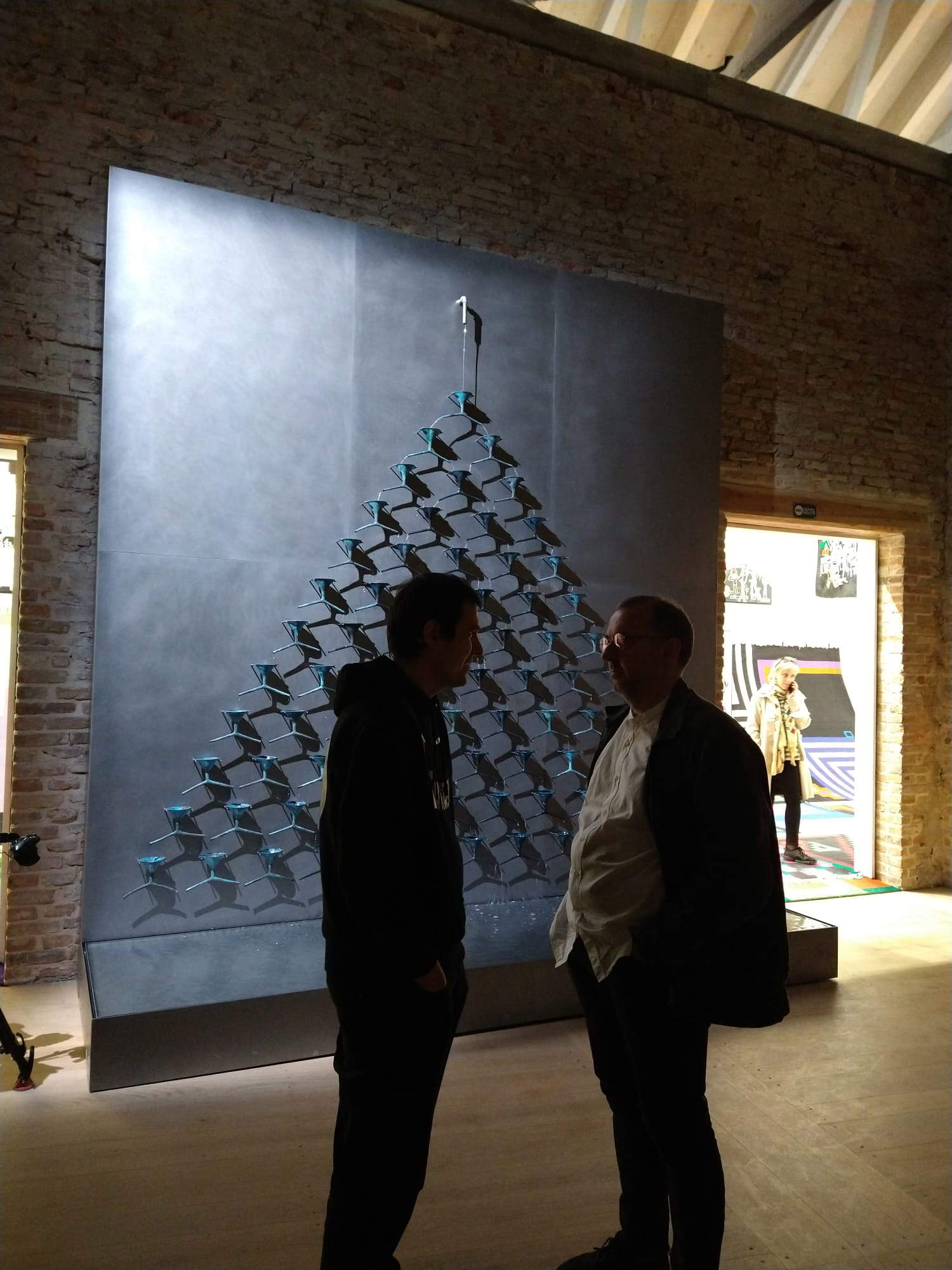
The Hungarian pavilion brings to Venice the works of Zsófia Keresztes, who quotes Schopenhauer and creates an exhibition in four sections (which, to be honest, all look a bit the same) with large sculptures covered in mosaics and tied to each other with chains crawling throughout the pavilion. They are supposed to be body fragments trying to “reach their final form.” A dreamlike journey drawn out a bit. Snake fragments. Rating: 5 1/2.
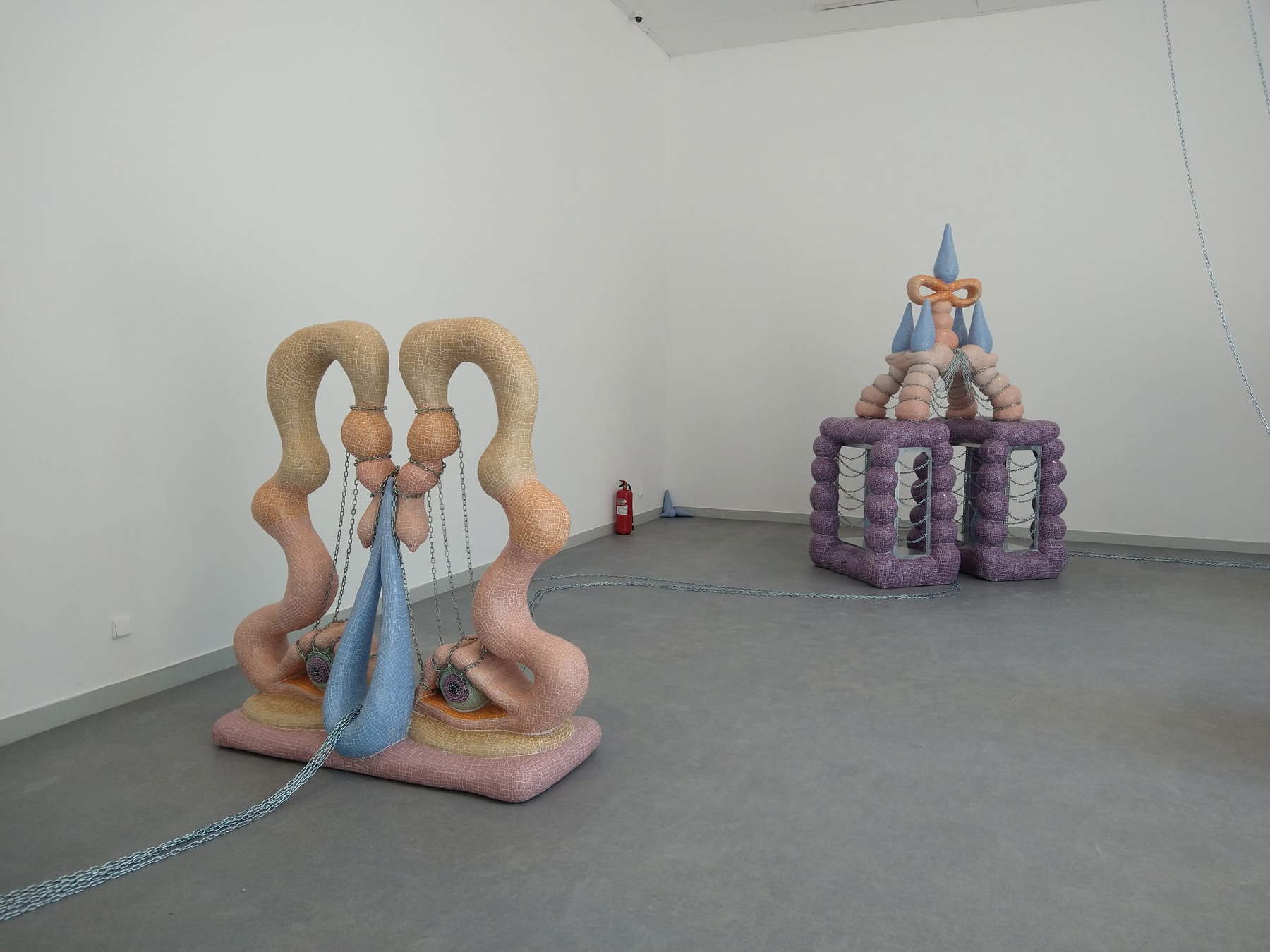
Gerardo Goldwasser tackles the theme of self-perception by referring to the fashion industry which, that “self,” somewhat tends to repress it. We then enter a very particular tailor’s shop where, however, everything is identical, the same, black. Curious is the tailor with a tape measure on his shoulders standing there in front of the main installation. Tailoring Take Me Away. Rating: 5 1/2.
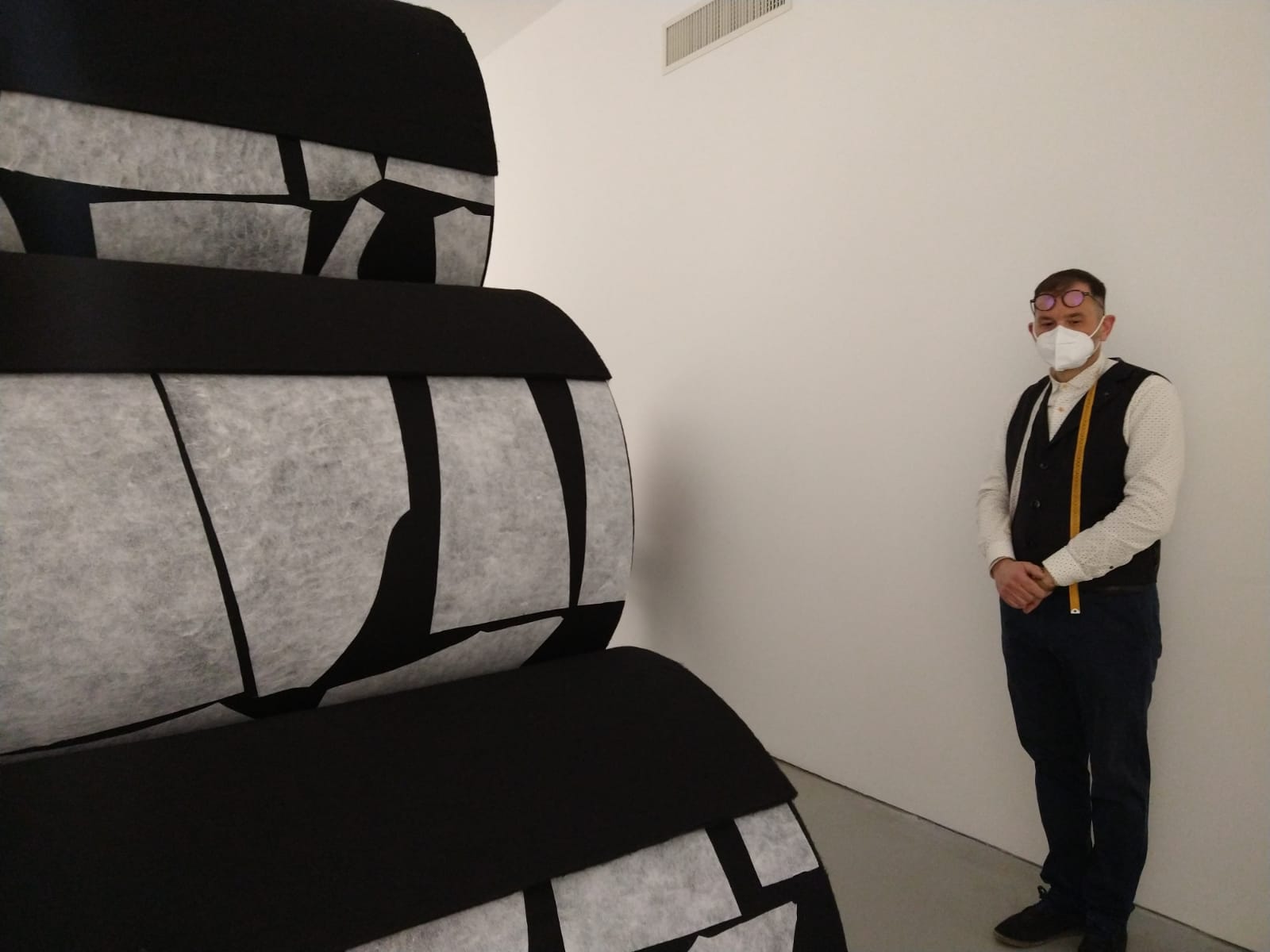
At the end of the Biennial, Uzbekistan will be counting the number of people who, having entered through the sprinting entrance, stumbled as soon as they found themselves on the reflective floor. The work is an installation by Charlie Tapp/Abror Zufarov and CCA Lab that stands as a “reflection” (at this point we suspect the Uzbeks meant the term literally) on the first scientific text in which algebra becomes a discipline in its own right (it is the work of a scientist born there, Muhammad ibn Musa al-Khwarizmii). The connection between the treatise and the flying bushes eludes. The public typically goes to see Uzbekistan to pass the time when they are in line for the Italian Pavilion. Find someone to hold your seat. Depressed reflection. Rating: 4
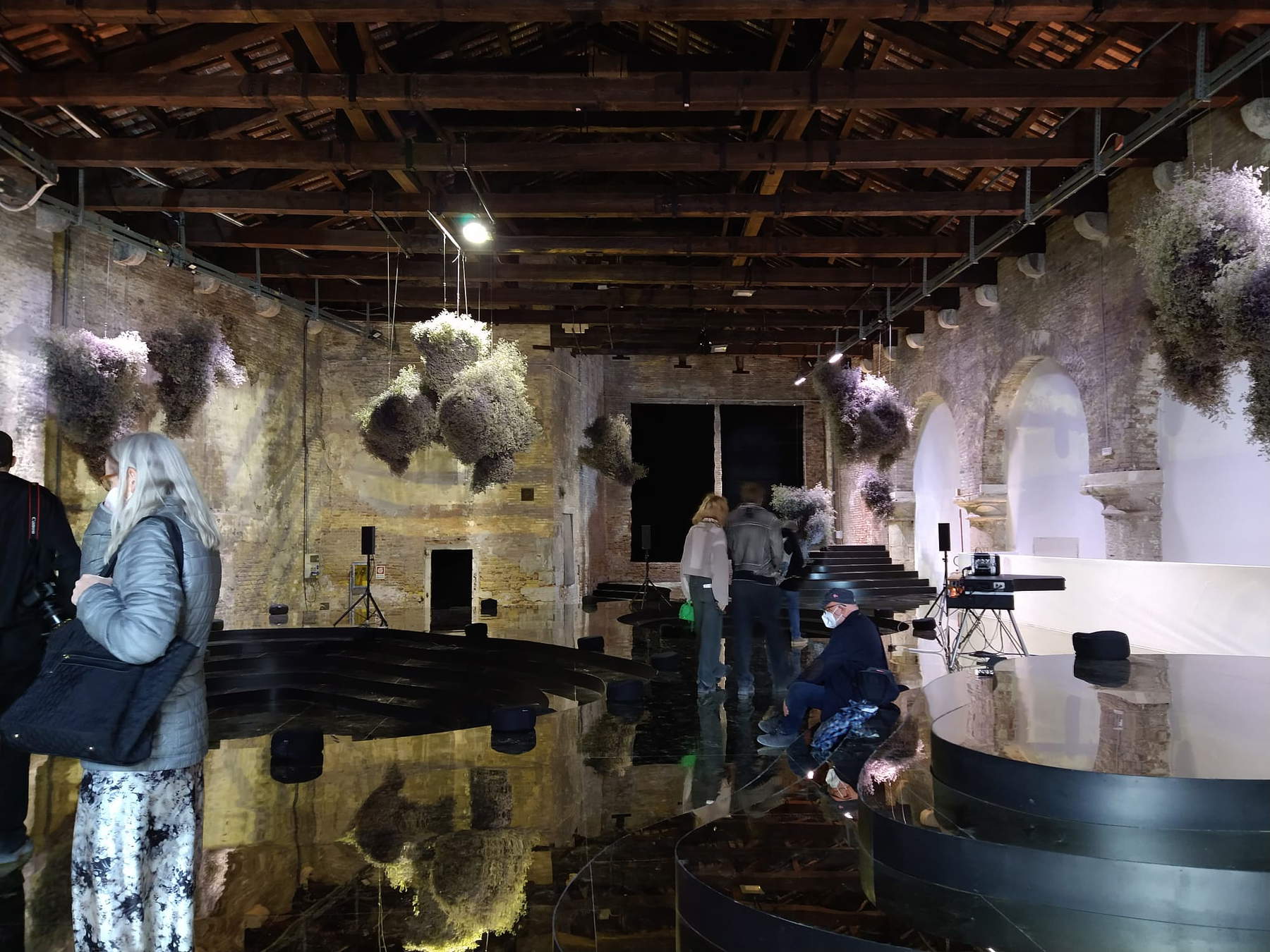
Four artists, Palmira Correa, César Vázquez, Mila Quast, and Jorge Recio, follow one of the main strands of the exhibition, that on the body, declined according to four levels: body as a metaphor for life, social body, body understood as home, body as microcosm. Which, however, go a bit mixed up within the pavilion. Video, painting, photographs of children’s drawings, there is a bit of everything, perhaps with fewer elements the discourse would have held better and the sense of weakness of the project less apparent. It is my changing body. Rating: 5 1/2

Warning: the translation into English of the original Italian article was created using automatic tools. We undertake to review all articles, but we do not guarantee the total absence of inaccuracies in the translation due to the program. You can find the original by clicking on the ITA button. If you find any mistake,please contact us.